Tag #reverse engineering
313 papers:
 ICST-2018-SharmaHM #adaptation
ICST-2018-SharmaHM #adaptation- Finding Substitutable Binary Code for Reverse Engineering by Synthesizing Adapters (VS, KH, SM), pp. 150–160.
 SANER-2017-MercierCJ #analysis #automation #memory management #named
SANER-2017-MercierCJ #analysis #automation #memory management #named- dynStruct: An automatic reverse engineering tool for structure recovery and memory use analysis (DM, AC, RJ), pp. 497–501.
 SANER-2017-MoserPP #documentation #generative #towards
SANER-2017-MoserPP #documentation #generative #towards- Towards reverse engineering of intermediate code for documentation generators (MM, MP, JP), pp. 553–554.
 CASE-2017-MazakWP #markov #process
CASE-2017-MazakWP #markov #process- Reverse engineering of production processes based on Markov chains (AM, MW, PPB), pp. 680–686.
 CSEET-2016-HajjejHA #development #process
CSEET-2016-HajjejHA #development #process- A Generic E-Assessment Process Development Based on Reverse Engineering and Cloud Services (FH, YBH, LJBA), pp. 157–165.
 ICPC-2016-CloutierKE #named #web
ICPC-2016-CloutierKE #named #web- WAVI: A reverse engineering tool for web applications (JC, SK, GEB), pp. 1–3.
 ICSME-2016-DeckerSCM #diagrams #uml
ICSME-2016-DeckerSCM #diagrams #uml- A Tool for Efficiently Reverse Engineering Accurate UML Class Diagrams (MJD, KS, MLC, JIM), pp. 607–609.
 ICSME-2016-WashizakiGK #metamodelling #taxonomy
ICSME-2016-WashizakiGK #metamodelling #taxonomy- A Taxonomy for Program Metamodels in Program Reverse Engineering (HW, YGG, FK), pp. 44–55.
 SANER-2016-FleckKMNPTW #case study #experience #multi #tool support
SANER-2016-FleckKMNPTW #case study #experience #multi #tool support- Experience Report on Building ASTM Based Tools for Multi-language Reverse Engineering (GF, WK, MM, LN, JP, RT, MW), pp. 683–687.
 SANER-2016-SailerDLM #named #realtime
SANER-2016-SailerDLM #named #realtime- CoreTAna: A Trace Analyzer for Reverse Engineering Real-Time Software (AS, MD, GL, JM), pp. 657–660.
 KDD-2016-DingFC #assembly #named
KDD-2016-DingFC #assembly #named- Kam1n0: MapReduce-based Assembly Clone Search for Reverse Engineering (SHHD, BCMF, PC), pp. 461–470.
 ASE-2016-AlshanqitiHK #contract #dynamic analysis #using #visual notation
ASE-2016-AlshanqitiHK #contract #dynamic analysis #using #visual notation- Visual contract extractor: a tool for reverse engineering visual contracts using dynamic analysis (AMA, RH, TK), pp. 816–821.
 ICSME-2015-SneedV #visual notation
ICSME-2015-SneedV #visual notation- Reverse engineering a visual age application (HMS, CV), pp. 487–496.
 SANER-2015-BaoLXWZ #interactive
SANER-2015-BaoLXWZ #interactive- Reverse engineering time-series interaction data from screen-captured videos (LB, JL, ZX, XW, BZ), pp. 399–408.
 ASE-2015-NguyenC #mobile #user interface
ASE-2015-NguyenC #mobile #user interface- Reverse Engineering Mobile Application User Interfaces with REMAUI (T) (TAN, CC), pp. 248–259.
 SAC-2015-TriasCSM #migration #named #tool support #web
SAC-2015-TriasCSM #migration #named #tool support #web- RE-CMS: a reverse engineering toolkit for the migration to CMS-based web applications (FT, VdC, MLS, EM), pp. 810–812.
 DAC-2015-GuoTFD #anti #obfuscation
DAC-2015-GuoTFD #anti #obfuscation- Investigation of obfuscation-based anti-reverse engineering for printed circuit boards (ZG, MT, DF, JD), p. 6.
 CSMR-WCRE-2014-AbbasiAHC #web
CSMR-WCRE-2014-AbbasiAHC #web- Reverse engineering web configurators (EKA, MA, PH, AC), pp. 264–273.
 CSMR-WCRE-2014-Bos #lightweight #runtime
CSMR-WCRE-2014-Bos #lightweight #runtime- Lightweight runtime reverse engineering of binary file format variants (JvdB), pp. 367–370.
 ICSME-2014-HabringerMP #case study #experience #legacy #sql
ICSME-2014-HabringerMP #case study #experience #legacy #sql- Reverse Engineering PL/SQL Legacy Code: An Experience Report (MH, MM, JP), pp. 553–556.
 GT-VMT-2014-AlshanqitiH #contract #java #towards #visual notation
GT-VMT-2014-AlshanqitiH #contract #java #towards #visual notation- Towards Dynamic Reverse Engineering Visual Contracts from Java (AMA, RH).
 CIKM-2014-AlabdulmohsinGZ #robust
CIKM-2014-AlabdulmohsinGZ #robust- Adding Robustness to Support Vector Machines Against Adversarial Reverse Engineering (IMA, XG, XZ), pp. 231–240.
 ICMT-2014-CuadradoGL #model transformation #reuse #usability
ICMT-2014-CuadradoGL #model transformation #reuse #usability- Reverse Engineering of Model Transformations for Reusability (JSC, EG, JdL), pp. 186–201.
 ICSE-2014-KimSZXA #component #functional #reuse
ICSE-2014-KimSZXA #component #functional #reuse- Reuse-oriented reverse engineering of functional components from x86 binaries (DK, WNS, XZ, DX, HA), pp. 1128–1139.
 DAC-2014-WeiWNP #physics #using
DAC-2014-WeiWNP #physics #using- Reverse Engineering and Prevention Techniques for Physical Unclonable Functions Using Side Channels (SW, JBW, AN, MP), p. 6.
 SIGMOD-2013-ZhangEPS #query
SIGMOD-2013-ZhangEPS #query- Reverse engineering complex join queries (MZ, HE, CMP, DS), pp. 809–820.
 ICSM-2013-Abbasi #web
ICSM-2013-Abbasi #web- Reverse Engineering Web Sales Configurators (EKA), pp. 586–589.
 WCRE-2013-HarmanLW #programming #search-based
WCRE-2013-HarmanLW #programming #search-based- Genetic programming for Reverse Engineering (MH, WBL, WW), pp. 1–10.
 WCRE-2013-Lammel #industrial
WCRE-2013-Lammel #industrial- Reverse Engineering in Industry (RL), p. 21.
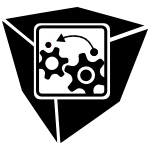 VISSOFT-2013-Wehrwein #lightweight #matrix #using #visualisation
VISSOFT-2013-Wehrwein #lightweight #matrix #using #visualisation- Lightweight software reverse engineering using augmented matrix visualizations (BW), pp. 1–4.
 SEKE-2013-YoonMPP #diagrams #sequence chart
SEKE-2013-YoonMPP #diagrams #sequence chart- Reverse Engineering of Sequence Diagrams by Merging Call Trees (SY, SM, SP, SP), pp. 368–374.
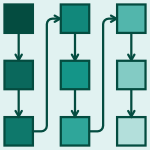 PLEASE-2013-Zhang0 #framework #named #towards #variability
PLEASE-2013-Zhang0 #framework #named #towards #variability- RECoVar: A solution framework towards reverse engineering variability (BZ, MB), pp. 45–48.
 DATE-2013-SubramanyanTPRSM #analysis #functional #using
DATE-2013-SubramanyanTPRSM #analysis #functional #using- Reverse engineering digital circuits using functional analysis (PS, NT, KP, DR, AS, SM), pp. 1277–1280.
 CSMR-2012-Penta #approach #developer #empirical #maintenance
CSMR-2012-Penta #approach #developer #empirical #maintenance- Empirical Studies in Reverse Engineering and Maintenance: Employing Developers to Evaluate Your Approach and Tool (MDP), pp. 567–568.
 WCRE-2012-GallagherCD
WCRE-2012-GallagherCD - The Law and Reverse Engineering (KG, CC, JD), pp. 3–4.
 WCRE-2012-HemelK #case study #clone detection #detection #linux #source code #using #variability
WCRE-2012-HemelK #case study #clone detection #detection #linux #source code #using #variability- Reverse Engineering Variability in Source Code Using Clone Detection: A Case Study for Linux Variants of Consumer Electronic Devices (AH, RK), pp. 357–366.
 WCRE-2012-JoorabchiM #mobile
WCRE-2012-JoorabchiM #mobile- Reverse Engineering iOS Mobile Applications (MEJ, AM), pp. 177–186.
 SEKE-2012-GokhaleSM #education #open source #re-engineering #tool support
SEKE-2012-GokhaleSM #education #open source #re-engineering #tool support- Evaluating Open Source Reverse Engineering Tools for Teaching Software Engineering (SSG, TS, RM), pp. 162–167.
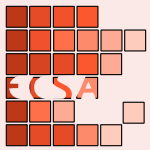 ECSA-2011-AcherCCMDL #architecture #feature model #modelling
ECSA-2011-AcherCCMDL #architecture #feature model #modelling- Reverse Engineering Architectural Feature Models (MA, AC, PC, PM, LD, PL), pp. 220–235.
 CSMR-2011-NagyVFGKK #design
CSMR-2011-NagyVFGKK #design- Solutions for Reverse Engineering 4GL Applications, Recovering the Design of a Logistical Wholesale System (CN, LV, RF, TG, FK, IK), pp. 343–346.
 SCAM-2011-RoubtsovSMB #diagrams #enterprise #java #named #sequence chart
SCAM-2011-RoubtsovSMB #diagrams #enterprise #java #named #sequence chart- I2SD: Reverse Engineering Sequence Diagrams from Enterprise Java Beans with Interceptors (SAR, AS, AM, MvdB), pp. 155–164.
 WCRE-2011-AntunesNV #network #protocol
WCRE-2011-AntunesNV #network #protocol- Reverse Engineering of Protocols from Network Traces (JA, NFN, PV), pp. 169–178.
 WCRE-2011-FrankeEKW #lifecycle #mobile
WCRE-2011-FrankeEKW #lifecycle #mobile- Reverse Engineering of Mobile Application Lifecycles (DF, CE, SK, CW), pp. 283–292.
 WCRE-2011-GrantCS #analysis #concept #source code #using
WCRE-2011-GrantCS #analysis #concept #source code #using- Reverse Engineering Co-maintenance Relationships Using Conceptual Analysis of Source Code (SG, JRC, DBS), pp. 87–91.
 WCRE-2011-HaslingerLE #feature model #modelling #set #source code
WCRE-2011-HaslingerLE #feature model #modelling #set #source code- Reverse Engineering Feature Models from Programs’ Feature Sets (ENH, RELH, AE), pp. 308–312.
 WCRE-2011-RamonCM
WCRE-2011-RamonCM - Reverse Engineering of Event Handlers of RAD-Based Applications (ÓSR, JSC, JGM), pp. 293–302.
 WCRE-2011-TreudeFSS #case study #security
WCRE-2011-TreudeFSS #case study #security- An Exploratory Study of Software Reverse Engineering in a Security Context (CT, FMFF, MADS, MS), pp. 184–188.
 CHI-2011-DixonLF #interface
CHI-2011-DixonLF #interface- Content and hierarchy in pixel-based methods for reverse engineering interface structure (MD, DL, JF), pp. 969–978.
 GTTSE-2011-CleveNH #database #program analysis
GTTSE-2011-CleveNH #database #program analysis- Dynamic Program Analysis for Database Reverse Engineering (AC, NN, JLH), pp. 297–321.
 ICSE-2011-SheLBWC #feature model #modelling
ICSE-2011-SheLBWC #feature model #modelling- Reverse engineering feature models (SS, RL, TB, AW, KC), pp. 461–470.
 DAC-2011-TorranceJ #state of the art
DAC-2011-TorranceJ #state of the art- The state-of-the-art in semiconductor reverse engineering (RT, DJ), pp. 333–338.
 CSMR-2010-BeckerHTKK #component #modelling #predict #quality
CSMR-2010-BeckerHTKK #component #modelling #predict #quality- Reverse Engineering Component Models for Quality Predictions (SB, MH, MT, KK, JK), pp. 194–197.
 ICSM-2010-Cosma #distributed #object-oriented
ICSM-2010-Cosma #distributed #object-oriented- Reverse engineering object-oriented distributed systems (DCC), pp. 1–6.
 WCRE-2010-DebrayP #self
WCRE-2010-DebrayP #self- Reverse Engineering Self-Modifying Code: Unpacker Extraction (SKD, JP), pp. 131–140.
 WCRE-2010-WongASLM #behaviour #detection #programming #search-based #using
WCRE-2010-WongASLM #behaviour #detection #programming #search-based #using- Reverse Engineering Utility Functions Using Genetic Programming to Detect Anomalous Behavior in Software (SW, MA, JS, KL, SM), pp. 141–149.
 CHI-2010-DixonF #behaviour #implementation #interface #named #using
CHI-2010-DixonF #behaviour #implementation #interface #named #using- Prefab: implementing advanced behaviors using pixel-based reverse engineering of interface structure (MD, JF), pp. 1525–1534.
 CAiSE-2010-RamdoyalCH #analysis #concept #database #interactive #user interface
CAiSE-2010-RamdoyalCH #analysis #concept #database #interactive #user interface- Reverse Engineering User Interfaces for Interactive Database Conceptual Analysis (RR, AC, JLH), pp. 332–347.
 ASE-2010-BruneliereCJM #framework #modelling #named
ASE-2010-BruneliereCJM #framework #modelling #named- MoDisco: a generic and extensible framework for model driven reverse engineering (HB, JC, FJ, FM), pp. 173–174.
 ASE-2010-RamonCM #legacy #modelling #user interface #visual notation
ASE-2010-RamonCM #legacy #modelling #user interface #visual notation- Model-driven reverse engineering of legacy graphical user interfaces (ÓSR, JSC, JGM), pp. 147–150.
 ICSE-2010-DettenMT
ICSE-2010-DettenMT - Reverse engineering with the reclipse tool suite (MvD, MM, DT), pp. 299–300.
 ICSE-2010-LunguL #ecosystem
ICSE-2010-LunguL #ecosystem- The small project observatory: a tool for reverse engineering software ecosystems (ML, ML), pp. 289–292.
 CSMR-2009-FrancescomarinoMT #process #web
CSMR-2009-FrancescomarinoMT #process #web- Reverse Engineering of Business Processes exposed as Web Applications (CDF, AM, PT), pp. 139–148.
 ICSM-2009-AmalfitanoFT #behaviour #internet #modelling
ICSM-2009-AmalfitanoFT #behaviour #internet #modelling- Experimenting a reverse engineering technique for modelling the behaviour of rich internet applications (DA, ARF, PT), pp. 571–574.
 ICSM-2009-StroblBGK #database #legacy #re-engineering
ICSM-2009-StroblBGK #database #legacy #re-engineering- Digging deep: Software reengineering supported by database reverse engineering of a system with 30+ years of legacy (SS, MB, TG, WK), pp. 407–410.
 WCRE-1999-BouhissiM99a #web #web service
WCRE-1999-BouhissiM99a #web #web service- Reverse Engineering Existing Web Service Applications (HEB, MM), pp. 279–283.
 WCRE-1999-Perez-CastilloGCPP99a #database #named #relational #web #web service
WCRE-1999-Perez-CastilloGCPP99a #database #named #relational #web #web service- PRECISO: A Reverse Engineering Tool to Discover Web Services from Relational Databases (RPC, IGRdG, IC, MP, MP), pp. 309–310.
 WCRE-1999-Perin99a #assurance #evolution #quality
WCRE-1999-Perin99a #assurance #evolution #quality- Enabling the Evolution of J2EE Applications through Reverse Engineering and Quality Assurance (FP), pp. 291–294.
 WCRE-1999-SerebrenikRRB99a #diagrams #enterprise #java #sequence chart
WCRE-1999-SerebrenikRRB99a #diagrams #enterprise #java #sequence chart- Reverse Engineering Sequence Diagrams for Enterprise JavaBeans with Business Method Interceptors (AS, SAR, EER, MvdB), pp. 269–273.
 WCRE-2009-Hainaut #future of #legacy
WCRE-2009-Hainaut #future of #legacy- Legacy and Future of Data Reverse Engineering (JLH), p. 4.
 ICEIS-ISAS-2009-LopesGBF #case study #industrial #ontology
ICEIS-ISAS-2009-LopesGBF #case study #industrial #ontology- Reverse Engineering a Domain Ontology to Uncover Fundamental Ontological Distinctions — An Industrial Case Study in the Domain of Oil and Gas Production and Exploration (ML, GG, FAB, RdAF), pp. 262–267.
 ICLP-2009-King #abstraction #logic
ICLP-2009-King #abstraction #logic- Untangling Reverse Engineering with Logic and Abstraction (AK), p. 37.
 CSMR-2008-Bernardi #aspect-oriented #assessment #comprehension #evolution #testing
CSMR-2008-Bernardi #aspect-oriented #assessment #comprehension #evolution #testing- Reverse Engineering of Aspect Oriented Systems to Support their Comprehension, Evolution, Testing and Assessment (MLB), pp. 290–293.
 CSMR-2008-ChouambeKK #component
CSMR-2008-ChouambeKK #component- Reverse Engineering Software-Models of Component-Based Systems (LC, BK, KK), pp. 93–102.
 CSMR-2008-TeleaV #c++ #named
CSMR-2008-TeleaV #c++ #named- SOLIDFX: An Integrated Reverse Engineering Environment for C++ (ACT, LV), pp. 320–322.
 ICPC-2008-MonganSM #distributed #re-engineering
ICPC-2008-MonganSM #distributed #re-engineering- Re-Engineering a Reverse Engineering Portal to a Distributed SOA (WMM, MS, SM), pp. 218–223.
 ICSM-2008-Kienle #component #development #process #tool support #towards
ICSM-2008-Kienle #component #development #process #tool support #towards- Building reverse engineering tools with software components: Towards a dedicated development process for academia (HMK), pp. 416–419.
 ICSM-2008-Lungu #ecosystem #towards
ICSM-2008-Lungu #ecosystem #towards- Towards reverse engineering software ecosystems (ML), pp. 428–431.
 WCRE-2008-AlalfiCD #database #diagrams #named #relational #sql #uml #xmi
WCRE-2008-AlalfiCD #database #diagrams #named #relational #sql #uml #xmi- SQL2XMI: Reverse Engineering of UML-ER Diagrams from Relational Database Schemas (MHA, JRC, TRD), pp. 187–191.
 WCRE-2008-AmalfitanoFT #finite #internet #state machine
WCRE-2008-AmalfitanoFT #finite #internet #state machine- Reverse Engineering Finite State Machines from Rich Internet Applications (DA, ARF, PT), pp. 69–73.
 WCRE-2008-CeccatoDTM #java #legacy #migration
WCRE-2008-CeccatoDTM #java #legacy #migration- Data Model Reverse Engineering in Migrating a Legacy System to Java (MC, TRD, PT, DM), pp. 177–186.
 WCRE-2008-CleveH #data-driven #dynamic analysis #sql
WCRE-2008-CleveH #data-driven #dynamic analysis #sql- Dynamic Analysis of SQL Statements for Data-Intensive Applications Reverse Engineering (AC, JLH), pp. 192–196.
 WCRE-2008-Devanbu #collaboration #communication #development #open source
WCRE-2008-Devanbu #collaboration #communication #development #open source- Reverse Engineering the Bazaar: Collaboration and Communication in Open Source Development (PTD), p. 4.
 WCRE-2008-FulopHFG #benchmark #metric #tool support #towards
WCRE-2008-FulopHFG #benchmark #metric #tool support #towards- Towards a Benchmark for Evaluating Reverse Engineering Tools (LJF, PH, RF, TG), pp. 335–336.
 WCRE-2008-Geet #enterprise
WCRE-2008-Geet #enterprise- Reverse Engineering in the World of Enterprise SOA (JVG), pp. 311–314.
 WCRE-2008-HindleGH
WCRE-2008-HindleGH - Reverse Engineering CAPTCHAs (AH, MWG, RCH), pp. 59–68.
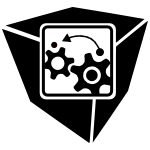 SOFTVIS-2008-TeleaV #c++ #interactive #scalability
SOFTVIS-2008-TeleaV #c++ #interactive #scalability- An interactive reverse engineering environment for large-scale C++ code (ACT, LV), pp. 67–76.
 SEKE-2008-DuffyHM #c++ #comprehension #evolution #interface #library #protocol #scalability
SEKE-2008-DuffyHM #c++ #comprehension #evolution #interface #library #protocol #scalability- Reverse Engineering Interface Protocols for Comprehension of Large C++ Libraries during Code Evolution Tasks (EBD, JOH, BAM), pp. 303–308.
 SEKE-2008-TinkhamTP #assessment #comprehension #java #source code #testing #tool support
SEKE-2008-TinkhamTP #assessment #comprehension #java #source code #testing #tool support- A Qualitative Assessment of the Reverse Engineering Capabilities of Unit Testing Tools for Understanding Java Programs (AT, SRT, TP), pp. 111–116.
 ECMDA-FA-2008-BorkGSZ #approach #towards
ECMDA-FA-2008-BorkGSZ #approach #towards- Towards Roundtrip Engineering — A Template-Based Reverse Engineering Approach (MB, LG, CS, AZ), pp. 33–47.
 MoDELS-2008-BruhlmannGGN
MoDELS-2008-BruhlmannGGN - Enriching Reverse Engineering with Annotations (AB, TG, OG, ON), pp. 660–674.
 MoDELS-2008-BruhlmannGGN
MoDELS-2008-BruhlmannGGN - Enriching Reverse Engineering with Annotations (AB, TG, OG, ON), pp. 660–674.
 WCRE-J-2005-KraftMP07 #framework
WCRE-J-2005-KraftMP07 #framework- An infrastructure to support interoperability in reverse engineering (NAK, BAM, JFP), pp. 292–307.
 ICPC-2007-Godfrey #hybrid #object-oriented
ICPC-2007-Godfrey #hybrid #object-oriented- A Hybrid Program Model for Object-Oriented Reverse Engineering (MWG), pp. 81–90.
 ICSM-2007-Arcelli
ICSM-2007-Arcelli - Working Session on Reverse Engineering techniques for Application Portfolio Management — RE4APM 2007 - (FA), pp. 495–496.
 ICSM-2007-Gueheneuc #flexibility #named
ICSM-2007-Gueheneuc #flexibility #named- Ptidej: A Flexible Reverse Engineering Tool Suite (YGG), pp. 529–530.
 PASTE-2007-ShepherdPV #case study #natural language #program analysis
PASTE-2007-ShepherdPV #case study #natural language #program analysis- Case study: supplementing program analysis with natural language analysis to improve a reverse engineering task (DCS, LLP, KVS), pp. 49–54.
 WCRE-2007-Kienle #component #lessons learnt #tool support
WCRE-2007-Kienle #component #lessons learnt #tool support- Building Reverse Engineering Tools with Software Components: Ten Lessons Learned (HMK), pp. 289–292.
 WCRE-2007-LunguLGH
WCRE-2007-LunguLGH - Reverse Engineering Super-Repositories (ML, ML, TG, RH), pp. 120–129.
 WCRE-2007-Mobley #performance
WCRE-2007-Mobley #performance- Reverse Engineering for Software Performance Engineering (KM), pp. 302–304.
 WCRE-2007-Reifer
WCRE-2007-Reifer - The Dark Side of Software Reverse Engineering (DJR).
 WCRE-2007-ShevertalovM #protocol
WCRE-2007-ShevertalovM #protocol- A Reverse Engineering Tool for Extracting Protocols of Networked Applications (MS, SM), pp. 229–238.
 WCRE-2007-Staiger #analysis #user interface #using #visual notation
WCRE-2007-Staiger #analysis #user interface #using #visual notation- Reverse Engineering of Graphical User Interfaces Using Static Analyses (SS), pp. 189–198.
 WCRE-2007-WalkinshawBHS #grammar inference #interactive #state machine
WCRE-2007-WalkinshawBHS #grammar inference #interactive #state machine- Reverse Engineering State Machines by Interactive Grammar Inference (NW, KB, MH, SS), pp. 209–218.
 SEKE-2007-KearneyP #automation #framework #named #tool support #uml
SEKE-2007-KearneyP #automation #framework #named #tool support #uml- REM4j — A Framework for Measuring the Reverse Engineering Capability of UML CASE Tools (SK, JFP), pp. 209–214.
 ECMDA-FA-2007-UlrichP #case study #distributed #industrial #modelling #validation
ECMDA-FA-2007-UlrichP #case study #distributed #industrial #modelling #validation- Reverse Engineering Models from Traces to Validate Distributed Systems — An Industrial Case Study (AU, AP), pp. 184–193.
 CSMR-2006-TuunanenKK #approach #information retrieval #named
CSMR-2006-TuunanenKK #approach #information retrieval #named- ASLA: Reverse Engineering Approach for Software License Information Retrieval (TT, JK, TK), pp. 291–294.
 ICPC-2006-JinC #tool support #using
ICPC-2006-JinC #tool support #using- Integrating Reverse Engineering Tools Using a Service-Sharing Methodology (DJ, JRC), pp. 94–99.
 ICPC-2006-MoiseWHH #scripting language
ICPC-2006-MoiseWHH #scripting language- Reverse Engineering Scripting Language Extensions (DLM, KW, HJH, DH), pp. 295–306.
 ICSM-2006-DraganCM
ICSM-2006-DraganCM - Reverse Engineering Method Stereotypes (ND, MLC, JIM), pp. 24–34.
 WCRE-2006-Briand #challenge #paradigm
WCRE-2006-Briand #challenge #paradigm- The Experimental Paradigm in Reverse Engineering: Role, Challenges, and Limitations (LCB), pp. 3–8.
 WCRE-2006-CleveHH #dependence #graph #using
WCRE-2006-CleveHH #dependence #graph #using- Data Reverse Engineering using System Dependency Graphs (AC, JH, JLH), pp. 157–166.
 WCRE-2006-CoxS #case study #experience
WCRE-2006-CoxS #case study #experience- Reverse Engineering in Support of Litigation: Experiences in an Adversarial Environment (AC, TJS), pp. 288–292.
 WCRE-2006-DAmbrosL #logic
WCRE-2006-DAmbrosL #logic- Reverse Engineering with Logical Coupling (MD, ML), pp. 189–198.
 WCRE-2006-FontanaRGAS #design pattern #detection
WCRE-2006-FontanaRGAS #design pattern #detection- Design Pattern Detection for Reverse Engineering (FAF, CR, YGG, GA, JMS), p. 316.
 WCRE-2006-KorshunovaPBM #c++ #diagrams #named #process #sequence #source code #uml #xmi
WCRE-2006-KorshunovaPBM #c++ #diagrams #named #process #sequence #source code #uml #xmi- CPP2XMI: Reverse Engineering of UML Class, Sequence, and Activity Diagrams from C++ Source Code (EK, MP, MvdB, MRM), pp. 297–298.
 WCRE-2006-SneedS #interface
WCRE-2006-SneedS #interface- Reverse Engineering of System Interfaces A Report from the Field (HMS, SHS), pp. 125–133.
 WCRE-2006-Torchiano #empirical
WCRE-2006-Torchiano #empirical- Empirical Studies in Reverse Engineering (MT), p. 314.
 SEKE-2006-BouchachiaW #rule-based
SEKE-2006-BouchachiaW #rule-based- Reverse Engineering of Rule-based Systems (AB, DW), pp. 45–50.
 AdaEurope-2006-RazaVP #named #program analysis
AdaEurope-2006-RazaVP #named #program analysis- Bauhaus — A Tool Suite for Program Analysis and Reverse Engineering (AR, GV, EP), pp. 71–82.
 ASE-2006-ShiO #design pattern #java #source code
ASE-2006-ShiO #design pattern #java #source code- Reverse Engineering of Design Patterns from Java Source Code (NS, RAO), pp. 123–134.
 ICSE-2006-RamalingamKFS #modelling #object-oriented #semantics
ICSE-2006-RamalingamKFS #modelling #object-oriented #semantics- Semantics-based reverse engineering of object-oriented data models (GR, RK, JF, SS), pp. 192–201.
 SAC-2006-KatsimpaPSTT #modelling #using
SAC-2006-KatsimpaPSTT #modelling #using- Application modeling using reverse engineering techniques (TK, YP, ES, GT, AKT), pp. 1250–1255.
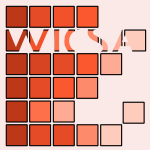 WICSA-2005-Chikofsky #architecture #on the
WICSA-2005-Chikofsky #architecture #on the- On the Meeting of Software Architecture and Reverse Engineering (EJC), pp. 17–24.
 WICSA-2005-Koschke #architecture #what
WICSA-2005-Koschke #architecture #what- What Architects Should Know About Reverse Engineering and Rengineering (RK), pp. 4–10.
 ICDAR-2005-RigamontiBHLI #canonical #documentation #representation #towards
ICDAR-2005-RigamontiBHLI #canonical #documentation #representation #towards- Towards a Canonical and Structured Representation of PDF Documents through Reverse Engineering (MR, JLB, KH, DL, RI), pp. 1050–1055.
 ITiCSE-2005-Ghafarian #education #re-engineering
ITiCSE-2005-Ghafarian #education #re-engineering- Reverse engineering technique to enhance software engineering education (AG), p. 354.
 CSMR-2005-BoisDV #comprehension #question
CSMR-2005-BoisDV #comprehension #question- Does the “Refactor to Understand” Reverse Engineering Pattern Improve Program Comprehension? (BDB, SD, JV), pp. 334–343.
 CSMR-2005-DraheimLW #independence #source code #web
CSMR-2005-DraheimLW #independence #source code #web- A Source Code Independent Reverse Engineering Tool for Dynamic Web Sites (DD, CL, GW), pp. 168–177.
 ICSM-2005-PanasS #evaluation #framework
ICSM-2005-PanasS #evaluation #framework- Evaluation of a Framework for Reverse Engineering Tool Construction (TP, MS), pp. 145–154.
 ICSM-2005-SalahDMSV #named #sequence
ICSM-2005-SalahDMSV #named #sequence- Scenariographer: A Tool for Reverse Engineering Class Usage Scenarios from Method Invocation Sequences (MS, TD, SM, AS, FIV), pp. 155–164.
 ICSM-2005-Tramontana #web
ICSM-2005-Tramontana #web- Reverse Engineering Web Applications (PT), pp. 705–708.
 ICSM-IT-2005-LiHCC #named #object-oriented
ICSM-IT-2005-LiHCC #named #object-oriented- XDRE: A Reverse Engineering Tool of Object-Oriented Software (QL, SH, HC, PC), pp. 65–68.
 PASTE-2005-RountevVR #analysis #control flow #diagrams #sequence chart #uml
PASTE-2005-RountevVR #analysis #control flow #diagrams #sequence chart #uml- Static control-flow analysis for reverse engineering of UML sequence diagrams (AR, OV, MR), pp. 96–102.
 WCRE-2005-KraftMP #framework #towards
WCRE-2005-KraftMP #framework #towards- Toward an Infrastructure to Support Interoperability in Reverse Engineering (NAK, BAM, JFP), pp. 196–205.
 WCRE-2005-KuhnDG #clustering #semantics
WCRE-2005-KuhnDG #clustering #semantics- Enriching Reverse Engineering with Semantic Clustering (AK, SD, TG), pp. 133–142.
 WCRE-2005-SuttonM #c++ #modelling #uml
WCRE-2005-SuttonM #c++ #modelling #uml- Mappings for Accurately Reverse Engineering UML Class Models from C++ (AS, JIM), pp. 175–184.
 WCRE-2005-UdupaDM #named #obfuscation
WCRE-2005-UdupaDM #named #obfuscation- Deobfuscation: Reverse Engineering Obfuscated Code (SKU, SKD, MM), pp. 45–54.
 WCRE-2005-YuMWLLZLL #named #requirements
WCRE-2005-YuMWLLZLL #named #requirements- RETR: Reverse Engineering to Requirements (YY, JM, YW, SL, AL, YZ, ML, JCSdPL), p. 234.
 RE-2005-YuWMLLL #legacy #modelling
RE-2005-YuWMLLL #legacy #modelling- Reverse Engineering Goal Models from Legacy Code (YY, YW, JM, SL, AL, JCSdPL), pp. 363–372.
 ICSE-2005-Tonella #object-oriented
ICSE-2005-Tonella #object-oriented- Reverse engineering of object oriented code (PT), pp. 724–725.
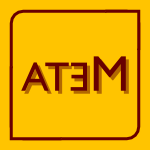 ATEM-2004-JinC05 #integration #ontology #tool support
ATEM-2004-JinC05 #integration #ontology #tool support- Factbase Filtering Issues in an Ontology-Based Reverse Engineering Tool Integration System (DJ, JRC), pp. 65–75.
 ATEM-2004-KarailaS05 #case study #industrial #metadata #on the #reuse #visual notation
ATEM-2004-KarailaS05 #case study #industrial #metadata #on the #reuse #visual notation- On the Role of Metadata in Visual Language Reuse and Reverse Engineering — An Industrial Case (MK, TS), pp. 29–41.
 CSMR-2004-MoiseWS #dot-net #visual notation
CSMR-2004-MoiseWS #dot-net #visual notation- Integrating a Reverse Engineering Tool with Microsoft Visual Studio .NET (DLM, KW, DS), pp. 85–94.
 CSMR-2004-Sneed #testing
CSMR-2004-Sneed #testing- Reverse Engineering of Test Cases for Selective Regression Testing (HMS), pp. 69–74.
 ICSM-2004-GirbaDL #evolution
ICSM-2004-GirbaDL #evolution- Yesterday’s Weather: Guiding Early Reverse Engineering Efforts by Summarizing the Evolution of Changes (TG, SD, ML), pp. 40–49.
 ICSM-2004-RivaSSX #analysis #architecture #maintenance #uml
ICSM-2004-RivaSSX #analysis #architecture #maintenance #uml- UML-Based Reverse Engineering and Model Analysis Approaches for Software Architecture Maintenance (CR, PS, TS, JX), pp. 50–59.
 IWPC-2004-DistantePT #perspective #towards #transaction #web
IWPC-2004-DistantePT #perspective #towards #transaction #web- Towards a Technique for Reverse Engineering Web Transactions from a User’s Perspective (DD, TP, SRT), pp. 142–150.
 IWPC-2004-PanasLL #reuse
IWPC-2004-PanasLL #reuse- Reuse in Reverse Engineering (TP, JL, WL), pp. 52–61.
 IWPC-2004-Tadonki
IWPC-2004-Tadonki - Universal Report: A Generic Reverse Engineering Tool (CT), pp. 266–267.
 WCRE-2004-BruntinkDT #aspect-oriented #empirical
WCRE-2004-BruntinkDT #aspect-oriented #empirical- An Initial Experiment in Reverse Engineering Aspects (MB, AvD, TT), pp. 306–307.
 WCRE-2004-GarciaLPAA #approach #effectiveness #towards
WCRE-2004-GarciaLPAA #approach #effectiveness #towards- Towards an Effective Approach for Reverse Engineering (VCG, DL, AFdP, AÁ, ESdA), pp. 298–299.
 WCRE-2004-HassanH
WCRE-2004-HassanH - The Small World of Software Reverse Engineering (AEH, RCH), pp. 278–283.
 WCRE-2004-RocheC #comprehension #hardware
WCRE-2004-RocheC #comprehension #hardware- Combined Software and Hardware Comprehension in Reverse Engineering (PLR, AC), pp. 234–243.
 WCRE-2004-WuMSL #approach #maintenance #version control
WCRE-2004-WuMSL #approach #maintenance #version control- A Reverse Engineering Approach to Support Software Maintenance: Version Control Knowledge Extraction (XW, AM, MADS, RL), pp. 90–99.
 ICEIS-v1-2004-WangLAB #database #legacy #relational #xml
ICEIS-v1-2004-WangLAB #database #legacy #relational #xml- Converting Legacy Relational Database into XML Database through Reverse Engineering (CW, ACWL, RA, KB), pp. 216–221.
 ICPR-v4-2004-KadyrovP
ICPR-v4-2004-KadyrovP - Reverse Engineering the Human Vision System: A Possible Explanation for the Role of Microsaccades (AK, MP), pp. 64–67.
 SEKE-2004-JahnkeB #architecture #clustering #using
SEKE-2004-JahnkeB #architecture #clustering #using- Reverse Engineering Software Architecture using Rough Clusters (JHJ, YB), pp. 270–275.
 SAC-2004-AvinoGM #finite #problem
SAC-2004-AvinoGM #finite #problem- Applications of finite fields to dynamical systems and reverse engineering problems (MAA, ELG, OM), pp. 191–196.
 SAC-2004-BellettiniMT #named #web
SAC-2004-BellettiniMT #named #web- WebUml: reverse engineering of web applications (CB, AM, AT), pp. 1662–1669.
 ATEM-2003-LethbridgeTP04 #metamodelling
ATEM-2003-LethbridgeTP04 #metamodelling- The Dagstuhl Middle Metamodel: A Schema For Reverse Engineering (TCL, ST, EP), pp. 7–18.
 ATEM-2003-MoiseW04
ATEM-2003-MoiseW04 - Issues in Integrating Schemas for Reverse Engineering (DLM, KW), pp. 81–91.
 ATEM-2003-NaikB04 #analysis #framework #programmable
ATEM-2003-NaikB04 #analysis #framework #programmable- A Programmable Analysis and Transformation Framework for Reverse Engineering (RN, AB), pp. 39–49.
 CSMR-2003-JinCD #adaptation #concept #integration #tool support #transaction #using
CSMR-2003-JinCD #adaptation #concept #integration #tool support #transaction #using- Transparent Reverse Engineering Tool Integration Using a Conceptual Transaction Adapter (DJ, JRC, TRD), pp. 399–408.
 ICSM-2003-JohnsonD #experience #information management #legacy #using
ICSM-2003-JohnsonD #experience #information management #legacy #using- Experience in developing interoperations among legacy information systems using partial reverse engineering (MJ, CNGD), pp. 369–372.
 ICSM-2003-TonellaP #c++ #diagrams #interactive
ICSM-2003-TonellaP #c++ #diagrams #interactive- Reverse Engineering of the Interaction Diagrams from C++ Code (PT, AP), pp. 159–168.
 IWPC-2003-NiereWW #scalability
IWPC-2003-NiereWW #scalability- Handling Large Search Space in Pattern-Based Reverse Engineering (JN, JPW, LW), pp. 274–280.
 WCRE-2003-BriandLM #diagrams #sequence chart #towards #uml
WCRE-2003-BriandLM #diagrams #sequence chart #towards #uml- Towards the Reverse Engineering of UML Sequence Diagrams (LCB, YL, YM), pp. 57–66.
 WCRE-2003-FavreGW #metamodelling
WCRE-2003-FavreGW #metamodelling- First International Workshop on Meta-Models and Schemas for Reverse Engineering — ateM 2003 (JMF, MWG, AW), pp. 366–367.
 WCRE-2003-KolschW #fuzzy #modelling #repository
WCRE-2003-KolschW #fuzzy #modelling #repository- Fuzzy Extensions for Reverse Engineering Repository Models (UK, RW), pp. 113–122.
 WCRE-2003-LiuS #process
WCRE-2003-LiuS #process- Reverse Engineering the Process of Small Novice Software Teams (YL, ES), pp. 102–112.
 WCRE-2003-MemonBN #testing #user interface #visual notation
WCRE-2003-MemonBN #testing #user interface #visual notation- GUI Ripping: Reverse Engineering of Graphical User Interfaces for Testing (AMM, IB, AN), pp. 260–269.
 WCRE-2003-MoiseW #experience #industrial
WCRE-2003-MoiseW #experience #industrial- An Industrial Experience in Reverse Engineering (DLM, KW), pp. 275–284.
 WCRE-2003-SnavelyDA #bytecode
WCRE-2003-SnavelyDA #bytecode- Unscheduling, Unpredication, Unspeculation: Reverse Engineering Itanium Executables (NS, SKD, GRA), pp. 4–13.
 WCRE-2003-ZhuCKWKM #tool support
WCRE-2003-ZhuCKWKM #tool support- Leveraging Visio for Adoption-Centric Reverse Engineering Tools (QZ, YC, PK, AW, HMK, HAM), pp. 270–274.
 AGTIVE-2003-Westfechtel #named #tool support
AGTIVE-2003-Westfechtel #named #tool support- E-CARES — Telecommunication Re- and Reverse Engineering Tools (AM, BW), pp. 440–445.
 ESEC-FSE-2003-Viljamaa #framework #interface #reuse
ESEC-FSE-2003-Viljamaa #framework #interface #reuse- Reverse engineering framework reuse interfaces (JV), pp. 217–226.
 CSMR-2002-LuccaFPTC #named #web
CSMR-2002-LuccaFPTC #named #web- WARE: A Tool for the Reverse Engineering of Web Applications (GADL, ARF, FP, PT, UdC), pp. 241–250.
 CSMR-2002-YehK
CSMR-2002-YehK - Reverse Engineering Aggregation Relationship Based on Propagation of Operations (DY, WYK), pp. 223–229.
 ICSM-2002-FerencBTG #c++ #named
ICSM-2002-FerencBTG #c++ #named- Columbus — Reverse Engineering Tool and Schema for C++ (RF, ÁB, MT, TG), pp. 172–181.
 WCRE-2002-KollmanSSSZ #case study #state of the art #uml
WCRE-2002-KollmanSSSZ #case study #state of the art #uml- A Study on the Current State of the Art in Tool-Supported UML-Based Static Reverse Engineering (RK, PS, ES, TS, AZ), p. 22–?.
 ICML-2002-SucB
ICML-2002-SucB - Qualitative reverse engineering (DS, IB), pp. 610–617.
 SEKE-2002-MitchellMT
SEKE-2002-MitchellMT - Search based reverse engineering (BSM, SM, MT), pp. 431–438.
 CSEET-2001-Bothe #challenge #education #scalability
CSEET-2001-Bothe #challenge #education #scalability- Reverse Engineering: The Challenge of Large-Scale Real-World Educational Projects (KB), pp. 115–126.
 CSMR-2001-FavreDESA #component #scalability
CSMR-2001-FavreDESA #component #scalability- Reverse Engineering a Large Component-Based Software Product (JMF, FD, JE, RS, JJA), pp. 95–104.
 CSMR-2001-HenrardH #database #dependence #elicitation
CSMR-2001-HenrardH #database #dependence #elicitation- Data Dependency Elicitation in Database Reverse Engineering (JH, JLH), pp. 11–19.
 ICSM-2001-JohnsonR #information management #internet #legacy
ICSM-2001-JohnsonR #information management #internet #legacy- Reverse Engineering Legacy Information Systems for Internet Based Interoperation (MJ, RDR), p. 32–?.
 ICSM-2001-TonellaP #c++ #diagrams #uml
ICSM-2001-TonellaP #c++ #diagrams #uml- Reverse Engineering of the UML Class Diagram from C++ Code in Presence of Weakly Typed Containers (PT, AP), pp. 376–385.
 IWPC-2001-AndritsosM #data analysis
IWPC-2001-AndritsosM #data analysis- Reverse Engineering Meets Data Analysis (PA, RJM), pp. 157–166.
 IWPC-2001-GannodC #formal method #tool support #using
IWPC-2001-GannodC #formal method #tool support #using- A Suite of Tools for Facilitating Reverse Engineering Using Formal Methods (GCG, BHCC), pp. 221–232.
 IWPC-2001-Wong #challenge #community #research
IWPC-2001-Wong #challenge #community #research- Research Challenges in the Reverse Engineering Community (KW), p. 323.
 IWPC-2001-ZayourL #tool support
IWPC-2001-ZayourL #tool support- Adoption of Reverse Engineering Tools: A Cognitive Perspective and Methodology (IZ, TCL), pp. 245–255.
 WCRE-2001-Blaha #database #industrial
WCRE-2001-Blaha #database #industrial- A Retrospective on Industrial Database Reverse Engineering Projects. Part 1 (MRB), pp. 136–146.
 WCRE-2001-Blaha01a #database #industrial
WCRE-2001-Blaha01a #database #industrial- A Retrospective on Industrial Database Reverse Engineering Projects. Part 2 (MRB), p. 147–?.
 WCRE-2001-BoldyreffK
WCRE-2001-BoldyreffK - Reverse Engineering to Achieve Maintainable WWW Sites (CB, RK), p. 249–?.
 WCRE-2001-Davis #lessons learnt
WCRE-2001-Davis #lessons learnt- Lessons Learned in Data Reverse Engineering (KHD), pp. 323–327.
 WCRE-2001-Huet #database #empirical
WCRE-2001-Huet #database #empirical- From an Informal Textual Lexicon to a Well-Structured Lexical Database: An Experiment in Data Reverse Engineering (GPH), pp. 127–135.
 WCRE-2001-LuccaPAC #approach
WCRE-2001-LuccaPAC #approach- An Approach for Reverse Engineering of Web-Based Application (GADL, MDP, GA, GC), pp. 231–240.
 WCRE-2001-MancoridisSCGK #named
WCRE-2001-MancoridisSCGK #named- REportal: A Web-Based Portal Site for Reverse Engineering (SM, TSS, YFC, ERG, JLK), pp. 221–230.
 WCRE-2001-VanderdoncktBS #flexibility #web
WCRE-2001-VanderdoncktBS #flexibility #web- Flexible Reverse Engineering of Web Pages with VAQUISTA (JV, LB, NS), pp. 241–248.
 SVIS-2001-Koschke #visualisation
SVIS-2001-Koschke #visualisation- Software Visualization for Reverse Engineering (RK), pp. 138–150.
 ASE-2001-RugaberSS
ASE-2001-RugaberSS - Adequate Reverse Engineering (SR, TS, KS), p. 232–?.
 ICSE-2001-TilleyH #case study #comprehension #tool support #web
ICSE-2001-TilleyH #case study #comprehension #tool support #web- Evaluating the Reverse Engineering Capabilities of Web Tools for Understanding Site Content and Structure: A Case Study (SRT, SH), pp. 514–523.
 WCRE-J-1997-BaxterM00
WCRE-J-1997-BaxterM00 - Reverse engineering is reverse forward engineering (IDB, MM), pp. 131–147.
 CSMR-2000-Keller #petri net
CSMR-2000-Keller #petri net- Reverse Engineering with Petri Nets (WK), pp. 235–238.
 CSMR-2000-SwaffordEAM #case study #experience
CSMR-2000-SwaffordEAM #case study #experience- Experiences Reverse Engineering Manually (DS, DE, PA, JM), pp. 189–198.
 IWPC-2000-Anquetil #comparison #concept #graph
IWPC-2000-Anquetil #comparison #concept #graph- A Comparison of Graphs of Concept for Reverse Engineering (NA), pp. 231–240.
 IWPC-2000-CounsellNM #architecture #object-oriented #testing
IWPC-2000-CounsellNM #architecture #object-oriented #testing- Architectural Level Hypothesis Testing through Reverse Engineering of Object-Oriented Software (SC, PN, EM), pp. 60–66.
 WCRE-2000-BlahaB #database #education
WCRE-2000-BlahaB #database #education- Teaching Database Reverse Engineering (MRB, IB), pp. 79–85.
 WCRE-2000-DavisA #overview
WCRE-2000-DavisA #overview- Data Reverse Engineering: A Historical Survey (KHD, PHA), pp. 70–78.
 WCRE-2000-JahnkeW #tool support
WCRE-2000-JahnkeW #tool support- Reverse Engineering Tools as Media for Imperfect Knowledge (JHJ, AW), pp. 22–31.
 WCRE-2000-Ward #assembly #program transformation #specification
WCRE-2000-Ward #assembly #program transformation #specification- Reverse Engineering from Assembler to Formal Specifications via Program Transformations (MPW), p. 11–?.
 FoSE-2000-MullerJSSTW #roadmap
FoSE-2000-MullerJSSTW #roadmap- Reverse engineering: a roadmap (HAM, JHJ, DBS, MADS, SRT, KW), pp. 47–60.
 SAC-2000-BojicV #case study #uml
SAC-2000-BojicV #case study #uml- Reverse Engineering of Use Case Realizations in UML (DB, DMV), pp. 741–747.
 CSMR-1999-Pedro-de-JesusS #database #relational
CSMR-1999-Pedro-de-JesusS #database #relational- Selection of Reverse Engineering Methods for Relational Databases (MdLPdJ, PMAS), pp. 194–197.
 CSMR-1999-SousaPPA #clustering #database
CSMR-1999-SousaPPA #clustering #database- Clustering Relations into Abstract ER Schemas for Database Reverse Engineering (PMAS, MdLPdJ, GP, FBeA), pp. 169–177.
 ICSM-1999-MayrhauserWL #approach #architecture #comprehension #experience
ICSM-1999-MayrhauserWL #approach #architecture #comprehension #experience- Experience Paper: Experience with a Reverse Engineering Architecture Approach to Increase Understanding (AvM, JW, QL), pp. 131–138.
 WCRE-1999-Blaha #database #industrial
WCRE-1999-Blaha #database #industrial- An Industrial Example of Database Reverse Engineering (MRB), pp. 196–203.
 WCRE-1999-Cifuentes #development
WCRE-1999-Cifuentes #development- The Impact of Copyright on the Development of Cutting Edge Binary Reverse Engineering Technology (CC), pp. 66–76.
 WCRE-1999-DemeyerDL #approach #hybrid #metric #visualisation
WCRE-1999-DemeyerDL #approach #hybrid #metric #visualisation- A Hybrid Reverse Engineering Approach Combining Metrics and Program Visualization (SD, SD, ML), pp. 175–186.
 WCRE-1999-FreitasL #reuse #tool support
WCRE-1999-FreitasL #reuse #tool support- Reusing Domains for the Construction of Reverse Engineering Tools (FGdF, JCSdPL), p. 24–?.
 WCRE-1999-GannodC #design #framework
WCRE-1999-GannodC #design #framework- A Framework for Classifying and Comparing Software Reverse Engineering and Design Recovery Techniques (GCG, BHCC), pp. 77–88.
 WCRE-1999-GannodC99a #approach #case study #formal method
WCRE-1999-GannodC99a #approach #case study #formal method- A Formal Approach for Reverse Engineering: A Case Study (GCG, BHCC), pp. 100–111.
 WCRE-1999-KornCK #java #named
WCRE-1999-KornCK #java #named- Chava: Reverse Engineering and Tracking of Java Applets (JLK, YFC, EK), pp. 314–325.
 WCRE-1999-StrouliaEKSM #approach #interface #legacy
WCRE-1999-StrouliaEKSM #approach #interface #legacy- Reverse Engineering Legacy Interfaces: An Interaction-Driven Approach (ES, MER, LK, PGS, BM), p. 292–?.
 WCRE-1999-Systa #java #modelling #on the
WCRE-1999-Systa #java #modelling #on the- On the Relationships between Static and Dynamic Models in Reverse Engineering Java Software (TS), pp. 304–313.
 AGTIVE-1999-Cremer #graph #re-engineering #tool support
AGTIVE-1999-Cremer #graph #re-engineering #tool support- Graph-Based Reverse Engineering and Reengineering Tools (KC), pp. 95–109.
 OOPSLA-1999-Duggan #composition #java #type system
OOPSLA-1999-Duggan #composition #java #type system- Modular Type-Based Reverse Engineering of Parameterized Types in Java Code (DD), pp. 97–113.
 ICSE-1999-GannodC #approach #specification
ICSE-1999-GannodC #approach #specification- A Specification Matching Based Approach to Reverse Engineering (GCG, BHCC), pp. 389–398.
 CSMR-1998-GhannouchiGK #approach
CSMR-1998-GhannouchiGK #approach- A Generic Approach for Data Reverse Engineering Taking into Account Application Doamin Knowledge (SAG, HHBG, FK), pp. 21–28.
 ICSM-1998-Bennett #program transformation #question
ICSM-1998-Bennett #program transformation #question- Do Program Transformations Help Reverse Engineering? (KHB), p. 247–?.
 ICSM-1998-YangLZ #abstraction #approach #problem #re-engineering
ICSM-1998-YangLZ #abstraction #approach #problem #re-engineering- Tackling the Abstraction Problem for Reverse Engineering in a System Re-engineering Approach (HY, XL, HZ), pp. 284–293.
 WCRE-1998-Blaha #database #on the
WCRE-1998-Blaha #database #on the- On Reverse Engineering of Vendor Databases (MRB), pp. 183–190.
 WCRE-1998-CrossHBM #evaluation #framework #scalability #visualisation
WCRE-1998-CrossHBM #evaluation #framework #scalability #visualisation- Scalable Visualizations to Support Reverse Engineering: A Framework for Evaluation (JHCI, TDH, LAB, KSM), pp. 201–209.
 WCRE-1998-Dayani-FardJ #mining #repository
WCRE-1998-Dayani-FardJ #mining #repository- Reverse Engineering by Mining Dynamic Repositories (HDF, IJ), pp. 174–182.
 WCRE-1998-KoschkeG #analysis #representation
WCRE-1998-KoschkeG #analysis #representation- An Intermediate Representation for Reverse Engineering Analyses (RK, JFG), pp. 241–250.
 WCRE-1998-TheodorosEBW #design #named #object-oriented #source code
WCRE-1998-TheodorosEBW #design #named #object-oriented #source code- ROMEO: Reverse Engineering from OO Source Code to OMT Design (TL, HME, AB, NW), pp. 191–200.
 CAiSE-1998-HarrisonL #automation #information management #legacy #using
CAiSE-1998-HarrisonL #automation #information management #legacy #using- Automated Reverse Engineering of Legacy 4GL Information System Applications Using the ITOC Workbench (JVH, WML), pp. 41–57.
 ICPR-1998-LagunovskyAK #image #recognition
ICPR-1998-LagunovskyAK #image #recognition- Recognition of integrated circuit images in reverse engineering (DL, SA, MK), pp. 1640–1642.
 ASE-1998-GannodCC #approach #automation #reuse
ASE-1998-GannodCC #approach #automation #reuse- An Automated Approach for Supporting Software Reuse via Reverse Engineering (GCG, YC, BHCC), p. 94–?.
 ASE-1998-HarmerB #automation #empirical #java #legacy #lisp
ASE-1998-HarmerB #automation #empirical #java #legacy #lisp- Brewing Fresh JAVA from Legacy Lisp — An Experiment in Automated Reverse Engineering (TJH, JMB), pp. 318–332.
 CSMR-1997-JarzabekW #precise #tool support #towards
CSMR-1997-JarzabekW #precise #tool support #towards- Towards a precise description of reverse engineering methods and tools (SJ, IW), pp. 3–9.
 ICSM-1997-YangLC #re-engineering
ICSM-1997-YangLC #re-engineering- Measuring Abstractness for Reverse Engineering in a Re-engineering Tool (HY, PL, WCC), p. 48–?.
 WCRE-1997-AprilMA #approach
WCRE-1997-AprilMA #approach- A Reverse Engineering Approach to Evaluate Function Point Rules (AA, EM, AA), pp. 236–246.
 WCRE-1997-BaxterM
WCRE-1997-BaxterM - Reverse Engineering is Reverse Forward Engineering (IDB, MM), pp. 104–113.
 WCRE-1997-BellayG #comparison #tool support
WCRE-1997-BellayG #comparison #tool support- A Comparison of Four Reverse Engineering Tools (BB, HG), pp. 2–11.
 WCRE-1997-Blaha #database
WCRE-1997-Blaha #database- Dimensions of Database Reverse Engineering (MRB), pp. 176–183.
 WCRE-1997-HainautHHRE #case study #database #information management
WCRE-1997-HainautHHRE #case study #database #information management- Knowledge Transfer in Database Reverse Engineering: A Supporting Case Study (JLH, JMH, JH, DR, VE), p. 194–?.
 WCRE-1997-HendrixCBM #multi #tool support
WCRE-1997-HendrixCBM #multi #tool support- Tool Support for Reverse Engineering Multi-Lingual Software (TDH, JHCI, LAB, KSM), pp. 136–143.
 ICSM-2000-TortorellaV #component #named #process
ICSM-2000-TortorellaV #component #named #process- CREP — Characterizing Reverse Engineering Process Component Methodology (MT, GV), pp. 222–231.
 ASE-1997-GannodC #approach #automation #pointer #source code
ASE-1997-GannodC #approach #automation #pointer #source code- A Formal Automated Approach for Reverse Engineering Programs with Pointers (GCG, BHCC), pp. 219–226.
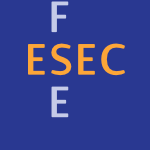 ESEC-FSE-1997-JahnkeSZ #database #fuzzy #reasoning #relational
ESEC-FSE-1997-JahnkeSZ #database #fuzzy #reasoning #relational- Generic Fuzzy Reasoning Nets as a Basis for Reverse Engineering Relational Database Applications (JHJ, WS, AZ), pp. 193–210.
 ICSE-1997-Muller #migration
ICSE-1997-Muller #migration- Reverse Engineering Strategies for Software Migration (HAM), pp. 659–660.
 ICSE-1997-StoreyWM #named #visualisation
ICSE-1997-StoreyWM #named #visualisation- Rigi: A Visualization Environment for Reverse Engineering (MADS, KW, HAM), pp. 606–607.
 ASF+SDF-1997-Moonen #analysis #architecture #data flow
ASF+SDF-1997-Moonen #analysis #architecture #data flow- A generic architecture for data flow analysis to support reverse engineering (LM), p. 10.
 ICSM-1996-FiutemTAM #architecture
ICSM-1996-FiutemTAM #architecture- A Cliche-Based Environment to Support Architectural Reverse Engineering (RF, PT, GA, EM), pp. 319–328.
 ICSM-1996-GannodC #c #source code #using
ICSM-1996-GannodC #c #source code #using- Using Informal and Formal Techniques for the Reverse Engineering of C Programs (GCG, BHCC), pp. 265–274.
 ICSM-1996-YoungerLBB #analysis #concurrent #formal method #modelling #source code #using
ICSM-1996-YoungerLBB #analysis #concurrent #formal method #modelling #source code #using- Reverse Engineering Concurrent Programs using Formal Modelling and Analysis (EJY, ZL, KHB, TMB), pp. 255–264.
 WCRE-1996-Cifuentes #automation
WCRE-1996-Cifuentes #automation- Partial Automation of an Integrated Reverse Engineering Environment of Binary Code (CC), pp. 50–56.
 WCRE-1996-Davis #flexibility
WCRE-1996-Davis #flexibility- Combining a Flexible Data Model and Phase Schema Translation in Data Model Reverse Engineering (KHD), p. 141–?.
 WCRE-1996-FiutemTAM #architecture
WCRE-1996-FiutemTAM #architecture- A Cliche-Based Environment to Support Architectural Reverse Engineering (RF, PT, GA, EM), pp. 277–286.
 WCRE-1996-GannodC #c #source code #using
WCRE-1996-GannodC #c #source code #using- Using Informal and Formal Techniques for the Reverse Engineering of C Programs (GCG, BHCC), pp. 249–258.
 WCRE-1996-HainautHREH #database #elicitation
WCRE-1996-HainautHREH #database #elicitation- Structure Elicitation in Database Reverse Engineering (JLH, JH, DR, VE, JMH), pp. 131–140.
 WCRE-1996-LakeB #approach #assembly #logic #modelling #source code
WCRE-1996-LakeB #approach #assembly #logic #modelling #source code- Reverse Engineering of Assembler Programs: A Model-Based Approach and its Logical Basis (TL, TB), pp. 67–75.
 WCRE-1996-McAllister #database
WCRE-1996-McAllister #database- Reverse Engineering a Medical Database (AJM), pp. 121–130.
 WCRE-1996-Moore #detection #rule-based #user interface
WCRE-1996-Moore #detection #rule-based #user interface- Rule-Based Detection for Reverse Engineering User Interfaces (MMM), p. 42–?.
 WCRE-1996-RobertsPK #assembly
WCRE-1996-RobertsPK #assembly- A Portable Assembler Reverse Engineering Environment (PARE) (SNR, RLP, DGK), p. 76–?.
 WCRE-1996-StoreyWFHHM #design #empirical #on the
WCRE-1996-StoreyWFHHM #design #empirical #on the- On Designing an Experiment to Evaluate a Reverse Engineering Tool (MADS, KW, PF, DH, KH, HAM), p. 31–?.
 WCRE-1996-YoungerLBB #analysis #concurrent #formal method #modelling #source code #using
WCRE-1996-YoungerLBB #analysis #concurrent #formal method #modelling #source code #using- Reverse Engineering Concurrent Programs Using Formal Modelling and Analysis (EJY, ZL, KHB, TMB), pp. 239–248.
 ICPR-1996-EggertFF #multi
ICPR-1996-EggertFF #multi- Simultaneous registration of multiple range views for use in reverse engineering (DWE, AWF, RBF), pp. 243–247.
 KDD-1996-McKearneyR #database #information management
KDD-1996-McKearneyR #database #information management- Reverse Engineering Databases for Knowledge Discovery (SM, HR), pp. 375–378.
 SEKE-1996-Carver
SEKE-1996-Carver - Reverse Engineering Procedural Code for Object Recovery (DLC), pp. 442–449.
 ICSM-1995-BullYBL #named #safety
ICSM-1995-BullYBL #named #safety- Bylands: reverse engineering safety-critical systems (TMB, EJY, KHB, ZL), pp. 358–366.
 ICSM-1995-Tilley #modelling
ICSM-1995-Tilley #modelling- Domain-retargetable reverse engineering. III. Layered modeling (SRT), p. 52–?.
 WCRE-1995-Davis #named
WCRE-1995-Davis #named- August-II: A Tool for Step-by-Step Data Model Reverse Engineering (KHD).
 WCRE-1995-FioreLV #empirical
WCRE-1995-FioreLV #empirical- Analyzing Empirical Data from a Reverse Engineering Project (PF, FL, GV).
 WCRE-1995-GannodC #semantics
WCRE-1995-GannodC #semantics- Strongest Postcondition Semantics as the Formal Basis for Reverse Engineering (GCG, BHCC).
 WCRE-1995-HainautEHHR #information management #requirements
WCRE-1995-HainautEHHR #information management #requirements- Requirements for Information System Reverse Engineering Support (JLH, VE, JH, JMH, DR), pp. 134–145.
 WCRE-1995-JarzabekK #design
WCRE-1995-JarzabekK #design- Design of a Generic Reverse Engineering Assistant Tool (SJ, TPK), pp. 61–70.
 WCRE-1995-Lutsky #automation #documentation #testing
WCRE-1995-Lutsky #automation #documentation #testing- Automating Testing by Reverse Engineering of Software Documentation (PL).
 WCRE-1995-ZigmanW #re-engineering #reuse #specification
WCRE-1995-ZigmanW #re-engineering #reuse #specification- Integrating Reengineering, Reuse and Specification Tool Environments to Enable Reverse Engineering (FJZ, MLW).
 SEKE-1995-GallKM
SEKE-1995-GallKM - Pattern-Driven Reverse Engineering (HCG, RK, RM), pp. 334–341.
 ICSE-1995-HarrisRY #architecture
ICSE-1995-HarrisRY #architecture- Reverse Engineering to the Architectural Level (DRH, HBR, ASY), pp. 186–195.
 ICSE-1995-Quilici #legacy #towards
ICSE-1995-Quilici #legacy #towards- Reverse Engineering of Legacy Systems: A Path Toward Success (AQ), pp. 333–336.
 ICSE-1995-WeideHH #legacy
ICSE-1995-WeideHH #legacy- Reverse Engineering of Legacy Code Exposed (BWW, WDH, JEH), pp. 327–331.
 SAC-1995-KaradimitriouTB #re-engineering #scalability
SAC-1995-KaradimitriouTB #re-engineering #scalability- Reverse engineering and reengineering of a large serial system into a distributed-parallel version (KK, JMT, NEB), pp. 191–197.
 ICSM-1994-DeBaudMR #analysis
ICSM-1994-DeBaudMR #analysis- Domain Analysis and Reverse Engineering (JMD, BM, SR), pp. 326–335.
 ICSM-1994-Hildreth #requirements
ICSM-1994-Hildreth #requirements- Reverse Engineering Requirements for Process-Control Software (HH), pp. 316–325.
 ICSM-1994-MerloGT #specification #user interface #visual notation
ICSM-1994-MerloGT #specification #user interface #visual notation- Inference of Graphical AUIDL Specifications for the Reverse Engineering of User Interfaces (EM, PYG, AT), pp. 80–88.
 ICSM-1994-Tilley #personalisation #user interface
ICSM-1994-Tilley #personalisation #user interface- Domain-Retargetable Reverse Engineering II: Personalized User Interfaces (SRT), pp. 336–342.
 FSE-1994-JacksonR #dependence
FSE-1994-JacksonR #dependence- A New Model of Program Dependences for Reverse Engineering (DJ, EJR), pp. 2–10.
 CSM-1993-TilleyMWW
CSM-1993-TilleyMWW - Domain-Retargetable Reverse Engineering (SRT, HAM, MJW, KW), pp. 142–151.
 WCRE-1993-AikenMR #framework #information management #legacy
WCRE-1993-AikenMR #framework #information management #legacy- A Framework for Reverse Engineering DoD Legacy Information Systems (PHA, AHM, RR), pp. 180–191.
 WCRE-1993-CanforaCM #data type #identification #reuse
WCRE-1993-CanforaCM #data type #identification #reuse- A Reverse Engineering Method for Identifying Reusable Abstract Data Types (GC, AC, MM), pp. 73–82.
 WCRE-1993-Cross #ada #diagrams #named
WCRE-1993-Cross #ada #diagrams #named- GRASP/Ada: Reverse Engineering of Control Structure Diagrams (JHCI), pp. 107–116.
 WCRE-1993-EdwardsM #cobol #named #specification
WCRE-1993-EdwardsM #cobol #named #specification- RECAST: Reverse Engineering from COBOL to SSADM Specifications (HME, MM), pp. 44–53.
 WCRE-1993-HainautCTJ #database #formal method
WCRE-1993-HainautCTJ #database #formal method- Contribution to a Theory of Database Reverse Engineering (JLH, MC, CT, MJ), pp. 161–170.
 WCRE-1993-LanoH
WCRE-1993-LanoH - Integrating Formal and Structured Methods in Reverse Engineering (KL, HPH), pp. 17–26.
 WCRE-1993-MerloGKPM #user interface
WCRE-1993-MerloGKPM #user interface- Reverse Engineering of User Interfaces (EM, JFG, KK, PP, RdM), pp. 171–179.
 WCRE-1993-PremerlaniB #approach #database #relational
WCRE-1993-PremerlaniB #approach #database #relational- An Approach for Reverse Engineering of Relational Databases (WJP, MRB), pp. 151–160.
 WCRE-1993-ReubensteinPR #analysis #parsing #tool support
WCRE-1993-ReubensteinPR #analysis #parsing #tool support- Separating Parsing and Analysis in Reverse Engineering Tools (HBR, RLP, SNR), pp. 117–125.
 WCRE-1993-RitschS #dynamic analysis #source code
WCRE-1993-RitschS #dynamic analysis #source code- Reverse Engineering Programs via Dynamic Analysis (HR, HMS), pp. 192–201.
 WCRE-1993-SelfridgeWC #challenge
WCRE-1993-SelfridgeWC #challenge- Challenges for the Field of Reverse Engineering (PGS, RCW, EJC), pp. 144–150.
 WCRE-1993-WardB #program transformation
WCRE-1993-WardB #program transformation- A Practical Program Transformation System for Reverse Engineering (MW, KB), pp. 212–221.
 SEKE-1993-BourbakisR #automation #visual notation
SEKE-1993-BourbakisR #automation #visual notation- An Expert Tool For Automatic Visual VLSI Reverse Engineering (NGB, DR), pp. 73–77.
 SEKE-1993-CallissUCR
SEKE-1993-CallissUCR - Reverse Engineering (FWC, JEU, JHCI, VR), pp. 544–545.
 SEKE-1993-CanforaCCS #ada #animation #interactive #source code
SEKE-1993-CanforaCCS #ada #animation #interactive #source code- Reverse Engineering and Interactive Animation of Ada Programs (GC, AC, UdC, LS), pp. 507–516.
 SEKE-1993-McFallSH #object-oriented #representation
SEKE-1993-McFallSH #object-oriented #representation- Reverse Engineering Structured Code to an Object-Oriented Representation (DM, GS, JH), pp. 86–93.
 ESEC-1993-GallK #reuse
ESEC-1993-GallK #reuse- Capsule Oriented Reverse Engineering for Software Reuse (HG, RK), pp. 418–433.
 ICSE-1993-BeckE #interface #slicing
ICSE-1993-BeckE #interface #slicing- Program and Interface Slicing for Reverse Engineering (JB, DE), pp. 509–518.
 ICSE-1993-EdwardsM #cobol #named #specification
ICSE-1993-EdwardsM #cobol #named #specification- RECAST: Reverse Engineering from COBOL to SSADM Specification (HME, MM), pp. 499–508.
 SEKE-1992-HuangSM #modelling #rule-based #source code #visual notation
SEKE-1992-HuangSM #modelling #rule-based #source code #visual notation- A Rule-Based Tool for Reverse Engineering from Source Code to Graphical Models (HH, KS, IM), pp. 178–185.
 SEKE-1992-Wagner #automation
SEKE-1992-Wagner #automation- The Renaissance of CASE Through Computer Aided Reverse Engineering (CARE) (JW), pp. 551–559.
 LFP-1990-TolmachA #debugging #ml #standard
LFP-1990-TolmachA #debugging #ml #standard- Debugging Standard ML Without Reverse Engineering (APT, AWA), pp. 1–12.
 ICST-2018-SharmaHM #adaptation
ICST-2018-SharmaHM #adaptation SANER-2017-MercierCJ #analysis #automation #memory management #named
SANER-2017-MercierCJ #analysis #automation #memory management #named SANER-2017-MoserPP #documentation #generative #towards
SANER-2017-MoserPP #documentation #generative #towards CASE-2017-MazakWP #markov #process
CASE-2017-MazakWP #markov #process CSEET-2016-HajjejHA #development #process
CSEET-2016-HajjejHA #development #process ICPC-2016-CloutierKE #named #web
ICPC-2016-CloutierKE #named #web ICSME-2016-DeckerSCM #diagrams #uml
ICSME-2016-DeckerSCM #diagrams #uml ICSME-2016-WashizakiGK #metamodelling #taxonomy
ICSME-2016-WashizakiGK #metamodelling #taxonomy SANER-2016-FleckKMNPTW #case study #experience #multi #tool support
SANER-2016-FleckKMNPTW #case study #experience #multi #tool support SANER-2016-SailerDLM #named #realtime
SANER-2016-SailerDLM #named #realtime KDD-2016-DingFC #assembly #named
KDD-2016-DingFC #assembly #named ASE-2016-AlshanqitiHK #contract #dynamic analysis #using #visual notation
ASE-2016-AlshanqitiHK #contract #dynamic analysis #using #visual notation ICSME-2015-SneedV #visual notation
ICSME-2015-SneedV #visual notation SANER-2015-BaoLXWZ #interactive
SANER-2015-BaoLXWZ #interactive ASE-2015-NguyenC #mobile #user interface
ASE-2015-NguyenC #mobile #user interface SAC-2015-TriasCSM #migration #named #tool support #web
SAC-2015-TriasCSM #migration #named #tool support #web DAC-2015-GuoTFD #anti #obfuscation
DAC-2015-GuoTFD #anti #obfuscation CSMR-WCRE-2014-AbbasiAHC #web
CSMR-WCRE-2014-AbbasiAHC #web CSMR-WCRE-2014-Bos #lightweight #runtime
CSMR-WCRE-2014-Bos #lightweight #runtime ICSME-2014-HabringerMP #case study #experience #legacy #sql
ICSME-2014-HabringerMP #case study #experience #legacy #sql GT-VMT-2014-AlshanqitiH #contract #java #towards #visual notation
GT-VMT-2014-AlshanqitiH #contract #java #towards #visual notation CIKM-2014-AlabdulmohsinGZ #robust
CIKM-2014-AlabdulmohsinGZ #robust ICMT-2014-CuadradoGL #model transformation #reuse #usability
ICMT-2014-CuadradoGL #model transformation #reuse #usability ICSE-2014-KimSZXA #component #functional #reuse
ICSE-2014-KimSZXA #component #functional #reuse DAC-2014-WeiWNP #physics #using
DAC-2014-WeiWNP #physics #using SIGMOD-2013-ZhangEPS #query
SIGMOD-2013-ZhangEPS #query ICSM-2013-Abbasi #web
ICSM-2013-Abbasi #web WCRE-2013-HarmanLW #programming #search-based
WCRE-2013-HarmanLW #programming #search-based WCRE-2013-Lammel #industrial
WCRE-2013-Lammel #industrial VISSOFT-2013-Wehrwein #lightweight #matrix #using #visualisation
VISSOFT-2013-Wehrwein #lightweight #matrix #using #visualisation SEKE-2013-YoonMPP #diagrams #sequence chart
SEKE-2013-YoonMPP #diagrams #sequence chart PLEASE-2013-Zhang0 #framework #named #towards #variability
PLEASE-2013-Zhang0 #framework #named #towards #variability DATE-2013-SubramanyanTPRSM #analysis #functional #using
DATE-2013-SubramanyanTPRSM #analysis #functional #using CSMR-2012-Penta #approach #developer #empirical #maintenance
CSMR-2012-Penta #approach #developer #empirical #maintenance WCRE-2012-GallagherCD
WCRE-2012-GallagherCD  WCRE-2012-HemelK #case study #clone detection #detection #linux #source code #using #variability
WCRE-2012-HemelK #case study #clone detection #detection #linux #source code #using #variability WCRE-2012-JoorabchiM #mobile
WCRE-2012-JoorabchiM #mobile SEKE-2012-GokhaleSM #education #open source #re-engineering #tool support
SEKE-2012-GokhaleSM #education #open source #re-engineering #tool support ECSA-2011-AcherCCMDL #architecture #feature model #modelling
ECSA-2011-AcherCCMDL #architecture #feature model #modelling CSMR-2011-NagyVFGKK #design
CSMR-2011-NagyVFGKK #design SCAM-2011-RoubtsovSMB #diagrams #enterprise #java #named #sequence chart
SCAM-2011-RoubtsovSMB #diagrams #enterprise #java #named #sequence chart WCRE-2011-AntunesNV #network #protocol
WCRE-2011-AntunesNV #network #protocol WCRE-2011-FrankeEKW #lifecycle #mobile
WCRE-2011-FrankeEKW #lifecycle #mobile WCRE-2011-GrantCS #analysis #concept #source code #using
WCRE-2011-GrantCS #analysis #concept #source code #using WCRE-2011-HaslingerLE #feature model #modelling #set #source code
WCRE-2011-HaslingerLE #feature model #modelling #set #source code WCRE-2011-RamonCM
WCRE-2011-RamonCM  WCRE-2011-TreudeFSS #case study #security
WCRE-2011-TreudeFSS #case study #security CHI-2011-DixonLF #interface
CHI-2011-DixonLF #interface GTTSE-2011-CleveNH #database #program analysis
GTTSE-2011-CleveNH #database #program analysis ICSE-2011-SheLBWC #feature model #modelling
ICSE-2011-SheLBWC #feature model #modelling DAC-2011-TorranceJ #state of the art
DAC-2011-TorranceJ #state of the art CSMR-2010-BeckerHTKK #component #modelling #predict #quality
CSMR-2010-BeckerHTKK #component #modelling #predict #quality ICSM-2010-Cosma #distributed #object-oriented
ICSM-2010-Cosma #distributed #object-oriented WCRE-2010-DebrayP #self
WCRE-2010-DebrayP #self WCRE-2010-WongASLM #behaviour #detection #programming #search-based #using
WCRE-2010-WongASLM #behaviour #detection #programming #search-based #using CHI-2010-DixonF #behaviour #implementation #interface #named #using
CHI-2010-DixonF #behaviour #implementation #interface #named #using CAiSE-2010-RamdoyalCH #analysis #concept #database #interactive #user interface
CAiSE-2010-RamdoyalCH #analysis #concept #database #interactive #user interface ASE-2010-BruneliereCJM #framework #modelling #named
ASE-2010-BruneliereCJM #framework #modelling #named ASE-2010-RamonCM #legacy #modelling #user interface #visual notation
ASE-2010-RamonCM #legacy #modelling #user interface #visual notation ICSE-2010-DettenMT
ICSE-2010-DettenMT  ICSE-2010-LunguL #ecosystem
ICSE-2010-LunguL #ecosystem CSMR-2009-FrancescomarinoMT #process #web
CSMR-2009-FrancescomarinoMT #process #web ICSM-2009-AmalfitanoFT #behaviour #internet #modelling
ICSM-2009-AmalfitanoFT #behaviour #internet #modelling ICSM-2009-StroblBGK #database #legacy #re-engineering
ICSM-2009-StroblBGK #database #legacy #re-engineering WCRE-1999-BouhissiM99a #web #web service
WCRE-1999-BouhissiM99a #web #web service WCRE-1999-Perez-CastilloGCPP99a #database #named #relational #web #web service
WCRE-1999-Perez-CastilloGCPP99a #database #named #relational #web #web service WCRE-1999-Perin99a #assurance #evolution #quality
WCRE-1999-Perin99a #assurance #evolution #quality WCRE-1999-SerebrenikRRB99a #diagrams #enterprise #java #sequence chart
WCRE-1999-SerebrenikRRB99a #diagrams #enterprise #java #sequence chart WCRE-2009-Hainaut #future of #legacy
WCRE-2009-Hainaut #future of #legacy ICEIS-ISAS-2009-LopesGBF #case study #industrial #ontology
ICEIS-ISAS-2009-LopesGBF #case study #industrial #ontology ICLP-2009-King #abstraction #logic
ICLP-2009-King #abstraction #logic CSMR-2008-Bernardi #aspect-oriented #assessment #comprehension #evolution #testing
CSMR-2008-Bernardi #aspect-oriented #assessment #comprehension #evolution #testing CSMR-2008-ChouambeKK #component
CSMR-2008-ChouambeKK #component CSMR-2008-TeleaV #c++ #named
CSMR-2008-TeleaV #c++ #named ICPC-2008-MonganSM #distributed #re-engineering
ICPC-2008-MonganSM #distributed #re-engineering ICSM-2008-Kienle #component #development #process #tool support #towards
ICSM-2008-Kienle #component #development #process #tool support #towards ICSM-2008-Lungu #ecosystem #towards
ICSM-2008-Lungu #ecosystem #towards WCRE-2008-AlalfiCD #database #diagrams #named #relational #sql #uml #xmi
WCRE-2008-AlalfiCD #database #diagrams #named #relational #sql #uml #xmi WCRE-2008-AmalfitanoFT #finite #internet #state machine
WCRE-2008-AmalfitanoFT #finite #internet #state machine WCRE-2008-CeccatoDTM #java #legacy #migration
WCRE-2008-CeccatoDTM #java #legacy #migration WCRE-2008-CleveH #data-driven #dynamic analysis #sql
WCRE-2008-CleveH #data-driven #dynamic analysis #sql WCRE-2008-Devanbu #collaboration #communication #development #open source
WCRE-2008-Devanbu #collaboration #communication #development #open source WCRE-2008-FulopHFG #benchmark #metric #tool support #towards
WCRE-2008-FulopHFG #benchmark #metric #tool support #towards WCRE-2008-Geet #enterprise
WCRE-2008-Geet #enterprise WCRE-2008-HindleGH
WCRE-2008-HindleGH  SOFTVIS-2008-TeleaV #c++ #interactive #scalability
SOFTVIS-2008-TeleaV #c++ #interactive #scalability SEKE-2008-DuffyHM #c++ #comprehension #evolution #interface #library #protocol #scalability
SEKE-2008-DuffyHM #c++ #comprehension #evolution #interface #library #protocol #scalability SEKE-2008-TinkhamTP #assessment #comprehension #java #source code #testing #tool support
SEKE-2008-TinkhamTP #assessment #comprehension #java #source code #testing #tool support ECMDA-FA-2008-BorkGSZ #approach #towards
ECMDA-FA-2008-BorkGSZ #approach #towards MoDELS-2008-BruhlmannGGN
MoDELS-2008-BruhlmannGGN  MoDELS-2008-BruhlmannGGN
MoDELS-2008-BruhlmannGGN  WCRE-J-2005-KraftMP07 #framework
WCRE-J-2005-KraftMP07 #framework ICPC-2007-Godfrey #hybrid #object-oriented
ICPC-2007-Godfrey #hybrid #object-oriented ICSM-2007-Arcelli
ICSM-2007-Arcelli  ICSM-2007-Gueheneuc #flexibility #named
ICSM-2007-Gueheneuc #flexibility #named PASTE-2007-ShepherdPV #case study #natural language #program analysis
PASTE-2007-ShepherdPV #case study #natural language #program analysis WCRE-2007-Kienle #component #lessons learnt #tool support
WCRE-2007-Kienle #component #lessons learnt #tool support WCRE-2007-LunguLGH
WCRE-2007-LunguLGH  WCRE-2007-Mobley #performance
WCRE-2007-Mobley #performance WCRE-2007-Reifer
WCRE-2007-Reifer  WCRE-2007-ShevertalovM #protocol
WCRE-2007-ShevertalovM #protocol WCRE-2007-Staiger #analysis #user interface #using #visual notation
WCRE-2007-Staiger #analysis #user interface #using #visual notation WCRE-2007-WalkinshawBHS #grammar inference #interactive #state machine
WCRE-2007-WalkinshawBHS #grammar inference #interactive #state machine SEKE-2007-KearneyP #automation #framework #named #tool support #uml
SEKE-2007-KearneyP #automation #framework #named #tool support #uml ECMDA-FA-2007-UlrichP #case study #distributed #industrial #modelling #validation
ECMDA-FA-2007-UlrichP #case study #distributed #industrial #modelling #validation CSMR-2006-TuunanenKK #approach #information retrieval #named
CSMR-2006-TuunanenKK #approach #information retrieval #named ICPC-2006-JinC #tool support #using
ICPC-2006-JinC #tool support #using ICPC-2006-MoiseWHH #scripting language
ICPC-2006-MoiseWHH #scripting language ICSM-2006-DraganCM
ICSM-2006-DraganCM  WCRE-2006-Briand #challenge #paradigm
WCRE-2006-Briand #challenge #paradigm WCRE-2006-CleveHH #dependence #graph #using
WCRE-2006-CleveHH #dependence #graph #using WCRE-2006-CoxS #case study #experience
WCRE-2006-CoxS #case study #experience WCRE-2006-DAmbrosL #logic
WCRE-2006-DAmbrosL #logic WCRE-2006-FontanaRGAS #design pattern #detection
WCRE-2006-FontanaRGAS #design pattern #detection WCRE-2006-KorshunovaPBM #c++ #diagrams #named #process #sequence #source code #uml #xmi
WCRE-2006-KorshunovaPBM #c++ #diagrams #named #process #sequence #source code #uml #xmi WCRE-2006-SneedS #interface
WCRE-2006-SneedS #interface WCRE-2006-Torchiano #empirical
WCRE-2006-Torchiano #empirical SEKE-2006-BouchachiaW #rule-based
SEKE-2006-BouchachiaW #rule-based AdaEurope-2006-RazaVP #named #program analysis
AdaEurope-2006-RazaVP #named #program analysis ASE-2006-ShiO #design pattern #java #source code
ASE-2006-ShiO #design pattern #java #source code ICSE-2006-RamalingamKFS #modelling #object-oriented #semantics
ICSE-2006-RamalingamKFS #modelling #object-oriented #semantics SAC-2006-KatsimpaPSTT #modelling #using
SAC-2006-KatsimpaPSTT #modelling #using WICSA-2005-Chikofsky #architecture #on the
WICSA-2005-Chikofsky #architecture #on the WICSA-2005-Koschke #architecture #what
WICSA-2005-Koschke #architecture #what ICDAR-2005-RigamontiBHLI #canonical #documentation #representation #towards
ICDAR-2005-RigamontiBHLI #canonical #documentation #representation #towards ITiCSE-2005-Ghafarian #education #re-engineering
ITiCSE-2005-Ghafarian #education #re-engineering CSMR-2005-BoisDV #comprehension #question
CSMR-2005-BoisDV #comprehension #question CSMR-2005-DraheimLW #independence #source code #web
CSMR-2005-DraheimLW #independence #source code #web ICSM-2005-PanasS #evaluation #framework
ICSM-2005-PanasS #evaluation #framework ICSM-2005-SalahDMSV #named #sequence
ICSM-2005-SalahDMSV #named #sequence ICSM-2005-Tramontana #web
ICSM-2005-Tramontana #web ICSM-IT-2005-LiHCC #named #object-oriented
ICSM-IT-2005-LiHCC #named #object-oriented PASTE-2005-RountevVR #analysis #control flow #diagrams #sequence chart #uml
PASTE-2005-RountevVR #analysis #control flow #diagrams #sequence chart #uml WCRE-2005-KraftMP #framework #towards
WCRE-2005-KraftMP #framework #towards WCRE-2005-KuhnDG #clustering #semantics
WCRE-2005-KuhnDG #clustering #semantics WCRE-2005-SuttonM #c++ #modelling #uml
WCRE-2005-SuttonM #c++ #modelling #uml WCRE-2005-UdupaDM #named #obfuscation
WCRE-2005-UdupaDM #named #obfuscation WCRE-2005-YuMWLLZLL #named #requirements
WCRE-2005-YuMWLLZLL #named #requirements RE-2005-YuWMLLL #legacy #modelling
RE-2005-YuWMLLL #legacy #modelling ICSE-2005-Tonella #object-oriented
ICSE-2005-Tonella #object-oriented ATEM-2004-JinC05 #integration #ontology #tool support
ATEM-2004-JinC05 #integration #ontology #tool support ATEM-2004-KarailaS05 #case study #industrial #metadata #on the #reuse #visual notation
ATEM-2004-KarailaS05 #case study #industrial #metadata #on the #reuse #visual notation CSMR-2004-MoiseWS #dot-net #visual notation
CSMR-2004-MoiseWS #dot-net #visual notation CSMR-2004-Sneed #testing
CSMR-2004-Sneed #testing ICSM-2004-GirbaDL #evolution
ICSM-2004-GirbaDL #evolution ICSM-2004-RivaSSX #analysis #architecture #maintenance #uml
ICSM-2004-RivaSSX #analysis #architecture #maintenance #uml IWPC-2004-DistantePT #perspective #towards #transaction #web
IWPC-2004-DistantePT #perspective #towards #transaction #web IWPC-2004-PanasLL #reuse
IWPC-2004-PanasLL #reuse IWPC-2004-Tadonki
IWPC-2004-Tadonki  WCRE-2004-BruntinkDT #aspect-oriented #empirical
WCRE-2004-BruntinkDT #aspect-oriented #empirical WCRE-2004-GarciaLPAA #approach #effectiveness #towards
WCRE-2004-GarciaLPAA #approach #effectiveness #towards WCRE-2004-HassanH
WCRE-2004-HassanH  WCRE-2004-RocheC #comprehension #hardware
WCRE-2004-RocheC #comprehension #hardware WCRE-2004-WuMSL #approach #maintenance #version control
WCRE-2004-WuMSL #approach #maintenance #version control ICEIS-v1-2004-WangLAB #database #legacy #relational #xml
ICEIS-v1-2004-WangLAB #database #legacy #relational #xml ICPR-v4-2004-KadyrovP
ICPR-v4-2004-KadyrovP  SEKE-2004-JahnkeB #architecture #clustering #using
SEKE-2004-JahnkeB #architecture #clustering #using SAC-2004-AvinoGM #finite #problem
SAC-2004-AvinoGM #finite #problem SAC-2004-BellettiniMT #named #web
SAC-2004-BellettiniMT #named #web ATEM-2003-LethbridgeTP04 #metamodelling
ATEM-2003-LethbridgeTP04 #metamodelling ATEM-2003-MoiseW04
ATEM-2003-MoiseW04  ATEM-2003-NaikB04 #analysis #framework #programmable
ATEM-2003-NaikB04 #analysis #framework #programmable CSMR-2003-JinCD #adaptation #concept #integration #tool support #transaction #using
CSMR-2003-JinCD #adaptation #concept #integration #tool support #transaction #using ICSM-2003-JohnsonD #experience #information management #legacy #using
ICSM-2003-JohnsonD #experience #information management #legacy #using ICSM-2003-TonellaP #c++ #diagrams #interactive
ICSM-2003-TonellaP #c++ #diagrams #interactive IWPC-2003-NiereWW #scalability
IWPC-2003-NiereWW #scalability WCRE-2003-BriandLM #diagrams #sequence chart #towards #uml
WCRE-2003-BriandLM #diagrams #sequence chart #towards #uml WCRE-2003-FavreGW #metamodelling
WCRE-2003-FavreGW #metamodelling WCRE-2003-KolschW #fuzzy #modelling #repository
WCRE-2003-KolschW #fuzzy #modelling #repository WCRE-2003-LiuS #process
WCRE-2003-LiuS #process WCRE-2003-MemonBN #testing #user interface #visual notation
WCRE-2003-MemonBN #testing #user interface #visual notation WCRE-2003-MoiseW #experience #industrial
WCRE-2003-MoiseW #experience #industrial WCRE-2003-SnavelyDA #bytecode
WCRE-2003-SnavelyDA #bytecode WCRE-2003-ZhuCKWKM #tool support
WCRE-2003-ZhuCKWKM #tool support AGTIVE-2003-Westfechtel #named #tool support
AGTIVE-2003-Westfechtel #named #tool support ESEC-FSE-2003-Viljamaa #framework #interface #reuse
ESEC-FSE-2003-Viljamaa #framework #interface #reuse CSMR-2002-LuccaFPTC #named #web
CSMR-2002-LuccaFPTC #named #web CSMR-2002-YehK
CSMR-2002-YehK  ICSM-2002-FerencBTG #c++ #named
ICSM-2002-FerencBTG #c++ #named WCRE-2002-KollmanSSSZ #case study #state of the art #uml
WCRE-2002-KollmanSSSZ #case study #state of the art #uml ICML-2002-SucB
ICML-2002-SucB  SEKE-2002-MitchellMT
SEKE-2002-MitchellMT  CSEET-2001-Bothe #challenge #education #scalability
CSEET-2001-Bothe #challenge #education #scalability CSMR-2001-FavreDESA #component #scalability
CSMR-2001-FavreDESA #component #scalability CSMR-2001-HenrardH #database #dependence #elicitation
CSMR-2001-HenrardH #database #dependence #elicitation ICSM-2001-JohnsonR #information management #internet #legacy
ICSM-2001-JohnsonR #information management #internet #legacy ICSM-2001-TonellaP #c++ #diagrams #uml
ICSM-2001-TonellaP #c++ #diagrams #uml IWPC-2001-AndritsosM #data analysis
IWPC-2001-AndritsosM #data analysis IWPC-2001-GannodC #formal method #tool support #using
IWPC-2001-GannodC #formal method #tool support #using IWPC-2001-Wong #challenge #community #research
IWPC-2001-Wong #challenge #community #research IWPC-2001-ZayourL #tool support
IWPC-2001-ZayourL #tool support WCRE-2001-Blaha #database #industrial
WCRE-2001-Blaha #database #industrial WCRE-2001-Blaha01a #database #industrial
WCRE-2001-Blaha01a #database #industrial WCRE-2001-BoldyreffK
WCRE-2001-BoldyreffK  WCRE-2001-Davis #lessons learnt
WCRE-2001-Davis #lessons learnt WCRE-2001-Huet #database #empirical
WCRE-2001-Huet #database #empirical WCRE-2001-LuccaPAC #approach
WCRE-2001-LuccaPAC #approach WCRE-2001-MancoridisSCGK #named
WCRE-2001-MancoridisSCGK #named WCRE-2001-VanderdoncktBS #flexibility #web
WCRE-2001-VanderdoncktBS #flexibility #web SVIS-2001-Koschke #visualisation
SVIS-2001-Koschke #visualisation ASE-2001-RugaberSS
ASE-2001-RugaberSS  ICSE-2001-TilleyH #case study #comprehension #tool support #web
ICSE-2001-TilleyH #case study #comprehension #tool support #web WCRE-J-1997-BaxterM00
WCRE-J-1997-BaxterM00  CSMR-2000-Keller #petri net
CSMR-2000-Keller #petri net CSMR-2000-SwaffordEAM #case study #experience
CSMR-2000-SwaffordEAM #case study #experience IWPC-2000-Anquetil #comparison #concept #graph
IWPC-2000-Anquetil #comparison #concept #graph IWPC-2000-CounsellNM #architecture #object-oriented #testing
IWPC-2000-CounsellNM #architecture #object-oriented #testing WCRE-2000-BlahaB #database #education
WCRE-2000-BlahaB #database #education WCRE-2000-DavisA #overview
WCRE-2000-DavisA #overview WCRE-2000-JahnkeW #tool support
WCRE-2000-JahnkeW #tool support WCRE-2000-Ward #assembly #program transformation #specification
WCRE-2000-Ward #assembly #program transformation #specification FoSE-2000-MullerJSSTW #roadmap
FoSE-2000-MullerJSSTW #roadmap SAC-2000-BojicV #case study #uml
SAC-2000-BojicV #case study #uml CSMR-1999-Pedro-de-JesusS #database #relational
CSMR-1999-Pedro-de-JesusS #database #relational CSMR-1999-SousaPPA #clustering #database
CSMR-1999-SousaPPA #clustering #database ICSM-1999-MayrhauserWL #approach #architecture #comprehension #experience
ICSM-1999-MayrhauserWL #approach #architecture #comprehension #experience WCRE-1999-Blaha #database #industrial
WCRE-1999-Blaha #database #industrial WCRE-1999-Cifuentes #development
WCRE-1999-Cifuentes #development WCRE-1999-DemeyerDL #approach #hybrid #metric #visualisation
WCRE-1999-DemeyerDL #approach #hybrid #metric #visualisation WCRE-1999-FreitasL #reuse #tool support
WCRE-1999-FreitasL #reuse #tool support WCRE-1999-GannodC #design #framework
WCRE-1999-GannodC #design #framework WCRE-1999-GannodC99a #approach #case study #formal method
WCRE-1999-GannodC99a #approach #case study #formal method WCRE-1999-KornCK #java #named
WCRE-1999-KornCK #java #named WCRE-1999-StrouliaEKSM #approach #interface #legacy
WCRE-1999-StrouliaEKSM #approach #interface #legacy WCRE-1999-Systa #java #modelling #on the
WCRE-1999-Systa #java #modelling #on the AGTIVE-1999-Cremer #graph #re-engineering #tool support
AGTIVE-1999-Cremer #graph #re-engineering #tool support OOPSLA-1999-Duggan #composition #java #type system
OOPSLA-1999-Duggan #composition #java #type system ICSE-1999-GannodC #approach #specification
ICSE-1999-GannodC #approach #specification CSMR-1998-GhannouchiGK #approach
CSMR-1998-GhannouchiGK #approach ICSM-1998-Bennett #program transformation #question
ICSM-1998-Bennett #program transformation #question ICSM-1998-YangLZ #abstraction #approach #problem #re-engineering
ICSM-1998-YangLZ #abstraction #approach #problem #re-engineering WCRE-1998-Blaha #database #on the
WCRE-1998-Blaha #database #on the WCRE-1998-CrossHBM #evaluation #framework #scalability #visualisation
WCRE-1998-CrossHBM #evaluation #framework #scalability #visualisation WCRE-1998-Dayani-FardJ #mining #repository
WCRE-1998-Dayani-FardJ #mining #repository WCRE-1998-KoschkeG #analysis #representation
WCRE-1998-KoschkeG #analysis #representation WCRE-1998-TheodorosEBW #design #named #object-oriented #source code
WCRE-1998-TheodorosEBW #design #named #object-oriented #source code CAiSE-1998-HarrisonL #automation #information management #legacy #using
CAiSE-1998-HarrisonL #automation #information management #legacy #using ICPR-1998-LagunovskyAK #image #recognition
ICPR-1998-LagunovskyAK #image #recognition ASE-1998-GannodCC #approach #automation #reuse
ASE-1998-GannodCC #approach #automation #reuse ASE-1998-HarmerB #automation #empirical #java #legacy #lisp
ASE-1998-HarmerB #automation #empirical #java #legacy #lisp CSMR-1997-JarzabekW #precise #tool support #towards
CSMR-1997-JarzabekW #precise #tool support #towards ICSM-1997-YangLC #re-engineering
ICSM-1997-YangLC #re-engineering WCRE-1997-AprilMA #approach
WCRE-1997-AprilMA #approach WCRE-1997-BaxterM
WCRE-1997-BaxterM  WCRE-1997-BellayG #comparison #tool support
WCRE-1997-BellayG #comparison #tool support WCRE-1997-Blaha #database
WCRE-1997-Blaha #database WCRE-1997-HainautHHRE #case study #database #information management
WCRE-1997-HainautHHRE #case study #database #information management WCRE-1997-HendrixCBM #multi #tool support
WCRE-1997-HendrixCBM #multi #tool support ICSM-2000-TortorellaV #component #named #process
ICSM-2000-TortorellaV #component #named #process ASE-1997-GannodC #approach #automation #pointer #source code
ASE-1997-GannodC #approach #automation #pointer #source code ESEC-FSE-1997-JahnkeSZ #database #fuzzy #reasoning #relational
ESEC-FSE-1997-JahnkeSZ #database #fuzzy #reasoning #relational ICSE-1997-Muller #migration
ICSE-1997-Muller #migration ICSE-1997-StoreyWM #named #visualisation
ICSE-1997-StoreyWM #named #visualisation ASF+SDF-1997-Moonen #analysis #architecture #data flow
ASF+SDF-1997-Moonen #analysis #architecture #data flow ICSM-1996-FiutemTAM #architecture
ICSM-1996-FiutemTAM #architecture ICSM-1996-GannodC #c #source code #using
ICSM-1996-GannodC #c #source code #using ICSM-1996-YoungerLBB #analysis #concurrent #formal method #modelling #source code #using
ICSM-1996-YoungerLBB #analysis #concurrent #formal method #modelling #source code #using WCRE-1996-Cifuentes #automation
WCRE-1996-Cifuentes #automation WCRE-1996-Davis #flexibility
WCRE-1996-Davis #flexibility WCRE-1996-FiutemTAM #architecture
WCRE-1996-FiutemTAM #architecture WCRE-1996-GannodC #c #source code #using
WCRE-1996-GannodC #c #source code #using WCRE-1996-HainautHREH #database #elicitation
WCRE-1996-HainautHREH #database #elicitation WCRE-1996-LakeB #approach #assembly #logic #modelling #source code
WCRE-1996-LakeB #approach #assembly #logic #modelling #source code WCRE-1996-McAllister #database
WCRE-1996-McAllister #database WCRE-1996-Moore #detection #rule-based #user interface
WCRE-1996-Moore #detection #rule-based #user interface WCRE-1996-RobertsPK #assembly
WCRE-1996-RobertsPK #assembly WCRE-1996-StoreyWFHHM #design #empirical #on the
WCRE-1996-StoreyWFHHM #design #empirical #on the WCRE-1996-YoungerLBB #analysis #concurrent #formal method #modelling #source code #using
WCRE-1996-YoungerLBB #analysis #concurrent #formal method #modelling #source code #using ICPR-1996-EggertFF #multi
ICPR-1996-EggertFF #multi KDD-1996-McKearneyR #database #information management
KDD-1996-McKearneyR #database #information management SEKE-1996-Carver
SEKE-1996-Carver  ICSM-1995-BullYBL #named #safety
ICSM-1995-BullYBL #named #safety ICSM-1995-Tilley #modelling
ICSM-1995-Tilley #modelling WCRE-1995-Davis #named
WCRE-1995-Davis #named WCRE-1995-FioreLV #empirical
WCRE-1995-FioreLV #empirical WCRE-1995-GannodC #semantics
WCRE-1995-GannodC #semantics WCRE-1995-HainautEHHR #information management #requirements
WCRE-1995-HainautEHHR #information management #requirements WCRE-1995-JarzabekK #design
WCRE-1995-JarzabekK #design WCRE-1995-Lutsky #automation #documentation #testing
WCRE-1995-Lutsky #automation #documentation #testing WCRE-1995-ZigmanW #re-engineering #reuse #specification
WCRE-1995-ZigmanW #re-engineering #reuse #specification SEKE-1995-GallKM
SEKE-1995-GallKM  ICSE-1995-HarrisRY #architecture
ICSE-1995-HarrisRY #architecture ICSE-1995-Quilici #legacy #towards
ICSE-1995-Quilici #legacy #towards ICSE-1995-WeideHH #legacy
ICSE-1995-WeideHH #legacy SAC-1995-KaradimitriouTB #re-engineering #scalability
SAC-1995-KaradimitriouTB #re-engineering #scalability ICSM-1994-DeBaudMR #analysis
ICSM-1994-DeBaudMR #analysis ICSM-1994-Hildreth #requirements
ICSM-1994-Hildreth #requirements ICSM-1994-MerloGT #specification #user interface #visual notation
ICSM-1994-MerloGT #specification #user interface #visual notation ICSM-1994-Tilley #personalisation #user interface
ICSM-1994-Tilley #personalisation #user interface FSE-1994-JacksonR #dependence
FSE-1994-JacksonR #dependence CSM-1993-TilleyMWW
CSM-1993-TilleyMWW  WCRE-1993-AikenMR #framework #information management #legacy
WCRE-1993-AikenMR #framework #information management #legacy WCRE-1993-CanforaCM #data type #identification #reuse
WCRE-1993-CanforaCM #data type #identification #reuse WCRE-1993-Cross #ada #diagrams #named
WCRE-1993-Cross #ada #diagrams #named WCRE-1993-EdwardsM #cobol #named #specification
WCRE-1993-EdwardsM #cobol #named #specification WCRE-1993-HainautCTJ #database #formal method
WCRE-1993-HainautCTJ #database #formal method WCRE-1993-LanoH
WCRE-1993-LanoH  WCRE-1993-MerloGKPM #user interface
WCRE-1993-MerloGKPM #user interface WCRE-1993-PremerlaniB #approach #database #relational
WCRE-1993-PremerlaniB #approach #database #relational WCRE-1993-ReubensteinPR #analysis #parsing #tool support
WCRE-1993-ReubensteinPR #analysis #parsing #tool support WCRE-1993-RitschS #dynamic analysis #source code
WCRE-1993-RitschS #dynamic analysis #source code WCRE-1993-SelfridgeWC #challenge
WCRE-1993-SelfridgeWC #challenge WCRE-1993-WardB #program transformation
WCRE-1993-WardB #program transformation SEKE-1993-BourbakisR #automation #visual notation
SEKE-1993-BourbakisR #automation #visual notation SEKE-1993-CallissUCR
SEKE-1993-CallissUCR  SEKE-1993-CanforaCCS #ada #animation #interactive #source code
SEKE-1993-CanforaCCS #ada #animation #interactive #source code SEKE-1993-McFallSH #object-oriented #representation
SEKE-1993-McFallSH #object-oriented #representation ESEC-1993-GallK #reuse
ESEC-1993-GallK #reuse ICSE-1993-BeckE #interface #slicing
ICSE-1993-BeckE #interface #slicing ICSE-1993-EdwardsM #cobol #named #specification
ICSE-1993-EdwardsM #cobol #named #specification SEKE-1992-HuangSM #modelling #rule-based #source code #visual notation
SEKE-1992-HuangSM #modelling #rule-based #source code #visual notation SEKE-1992-Wagner #automation
SEKE-1992-Wagner #automation LFP-1990-TolmachA #debugging #ml #standard
LFP-1990-TolmachA #debugging #ml #standard











